The new Canyon Spectral CF has dropped a bit of travel but added the K.I.S. steering stabiliser. Coming in either full 29 or mixed wheel guises, this is Canyon’s attempt to square the trail bike circle.
- Brand: Canyon
- Product: Spectral CF 9
- From: Canyon
- Price: £4,799
- Tested by: Benji for 2 weeks
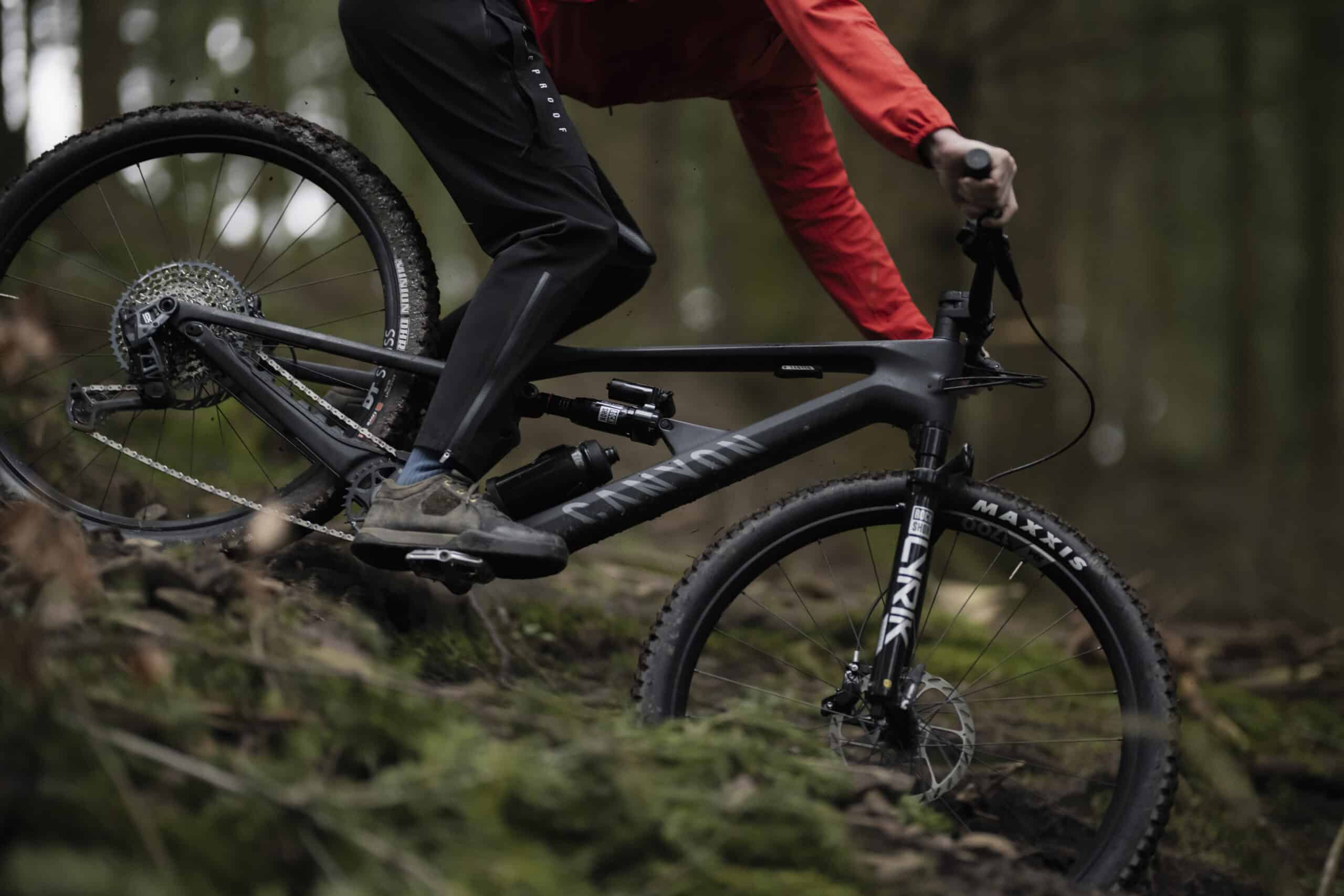
Pros
- Good geometry
- Good spec
- Normal headset (and stem! and spacers!)
Cons
- Very stiff frame
- Overdamped shock
- Harsh grips
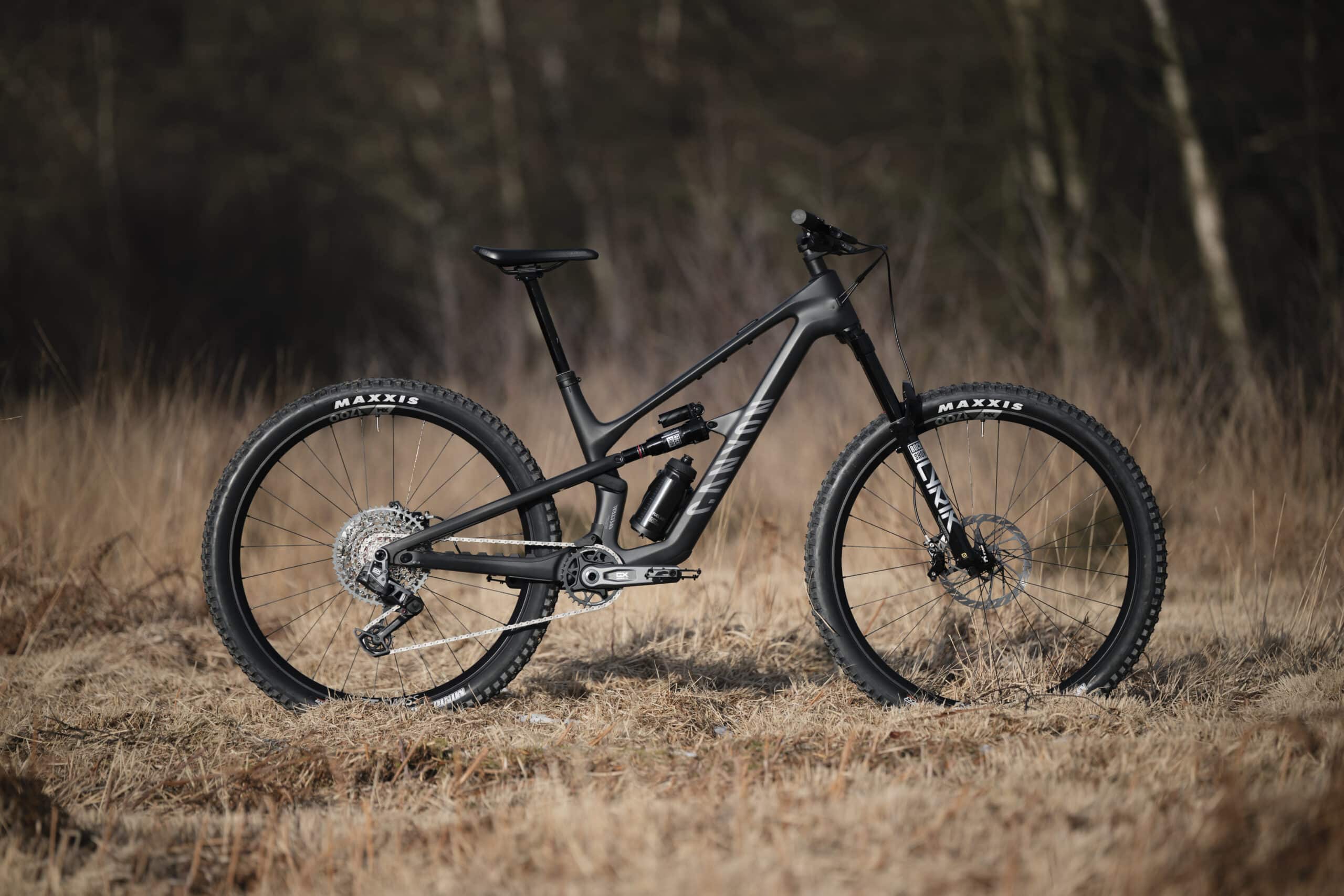
Less but more
The two most significant changes to new Canyon Spectral compared to the previous incarnation are a drop in travel and a rejig of sizings.
The new Spectral has had 10mm lopped off either end of its suspension; it’s now a 140mm rear travel trail bike with a 150mm travel fork up front. There are mullet and full-29 options (more on this later). There are no full-27.5 options. There are also no aluminium options. Carbon only. And only one flavour of carbon; there’s no higher/lighter grade CFR carbon model.
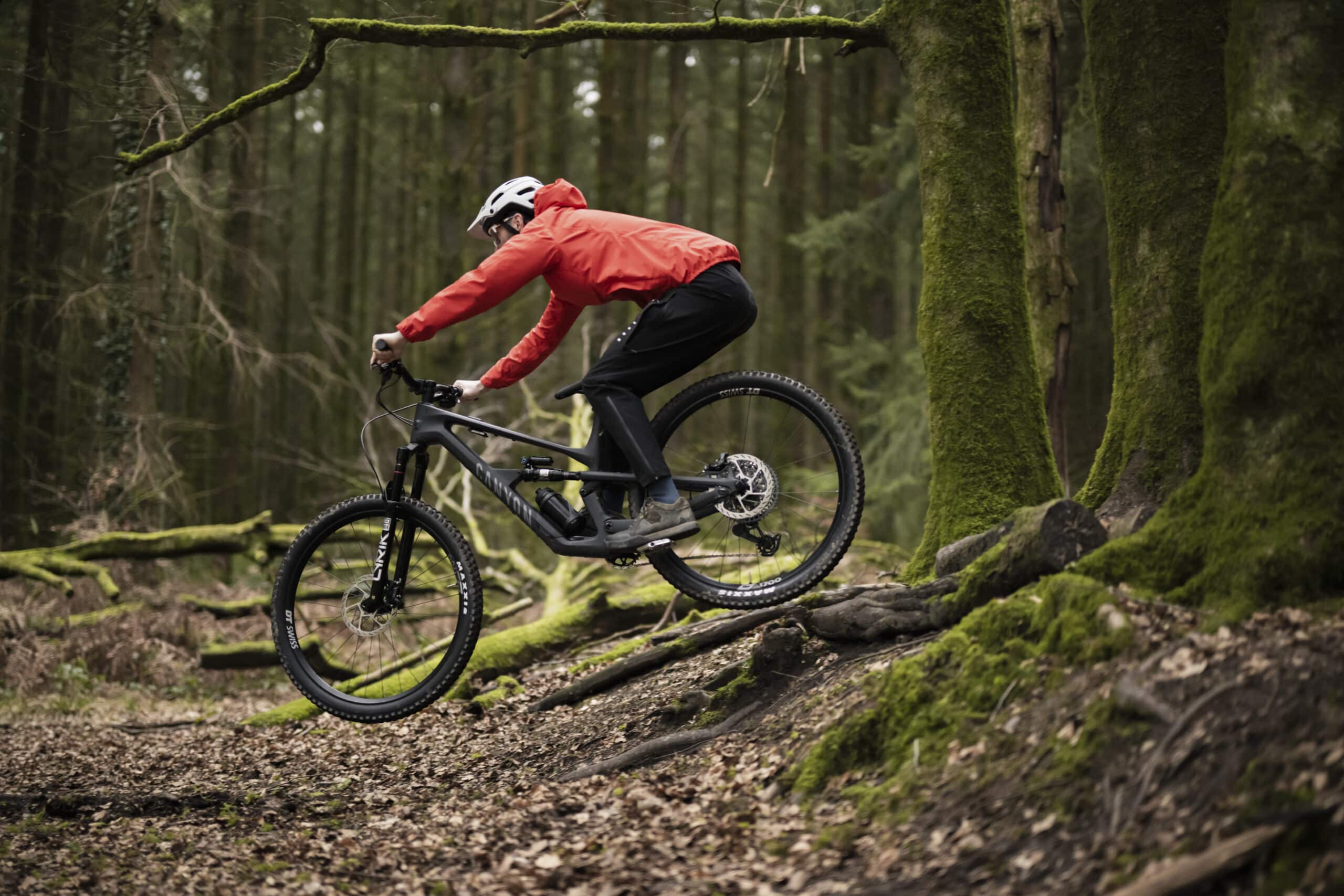
In terms of rejigged sizing, the new Spectral unsurprisingly follows Canyon’s recent move towards significantly longer reach figures and shorter seat tubes. For example, the Large size I’ve been testing has a healthy 500mm reach and a dropper-tastic dinky 445mm. I am big fan of Canyon’s new sizings; they’re more consistent and logical.
Frame design
What hasn’t changed about the Spectral is its focus on frame stiffness. Despite Canyon’s no-doubt true talk of reducing material and rigidity from the swingarm, the Spectral is an incredibly stiff machine. It’s also a strong enough frame to bear Canyon’s ‘Category 4’ enduro-proof rating.
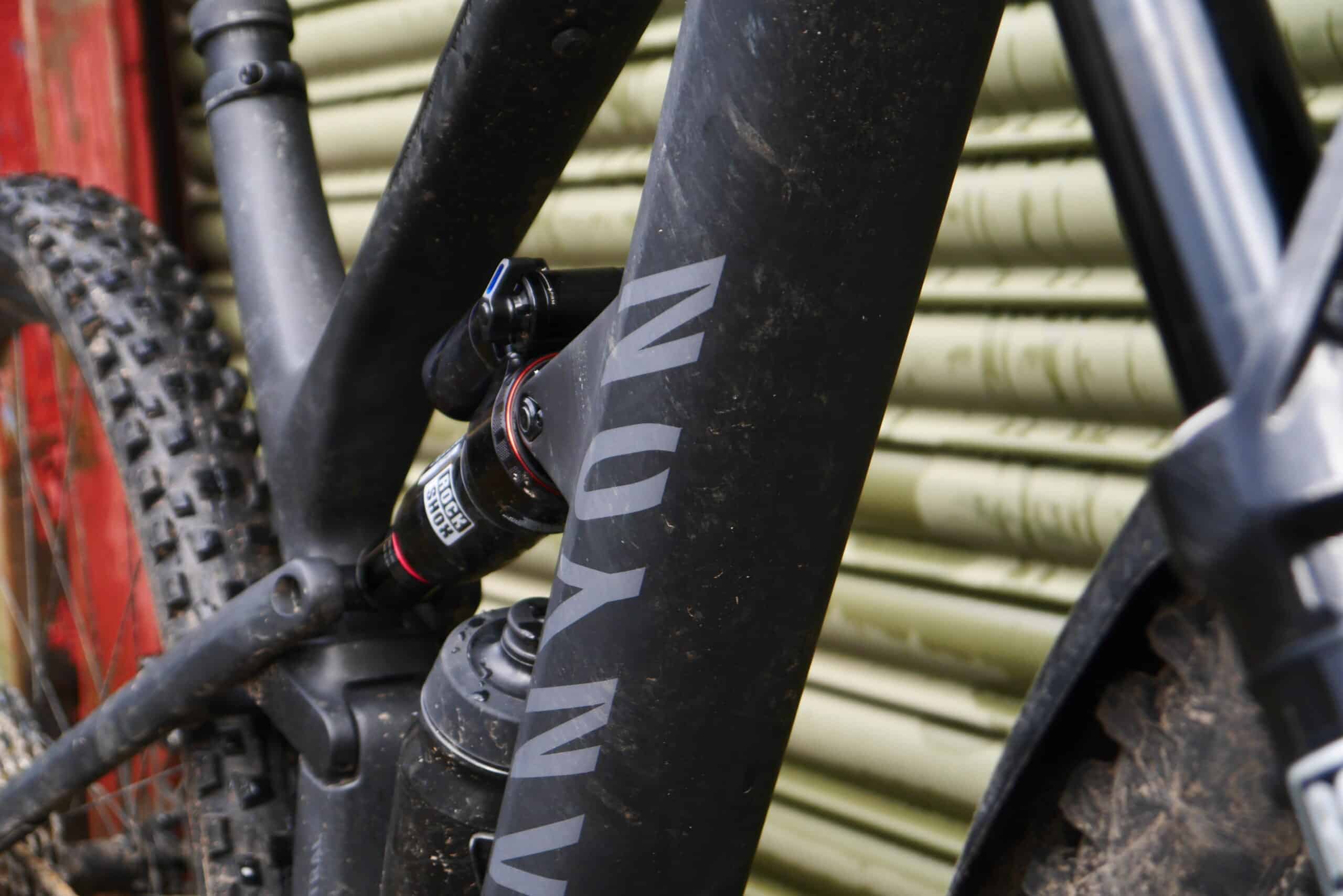
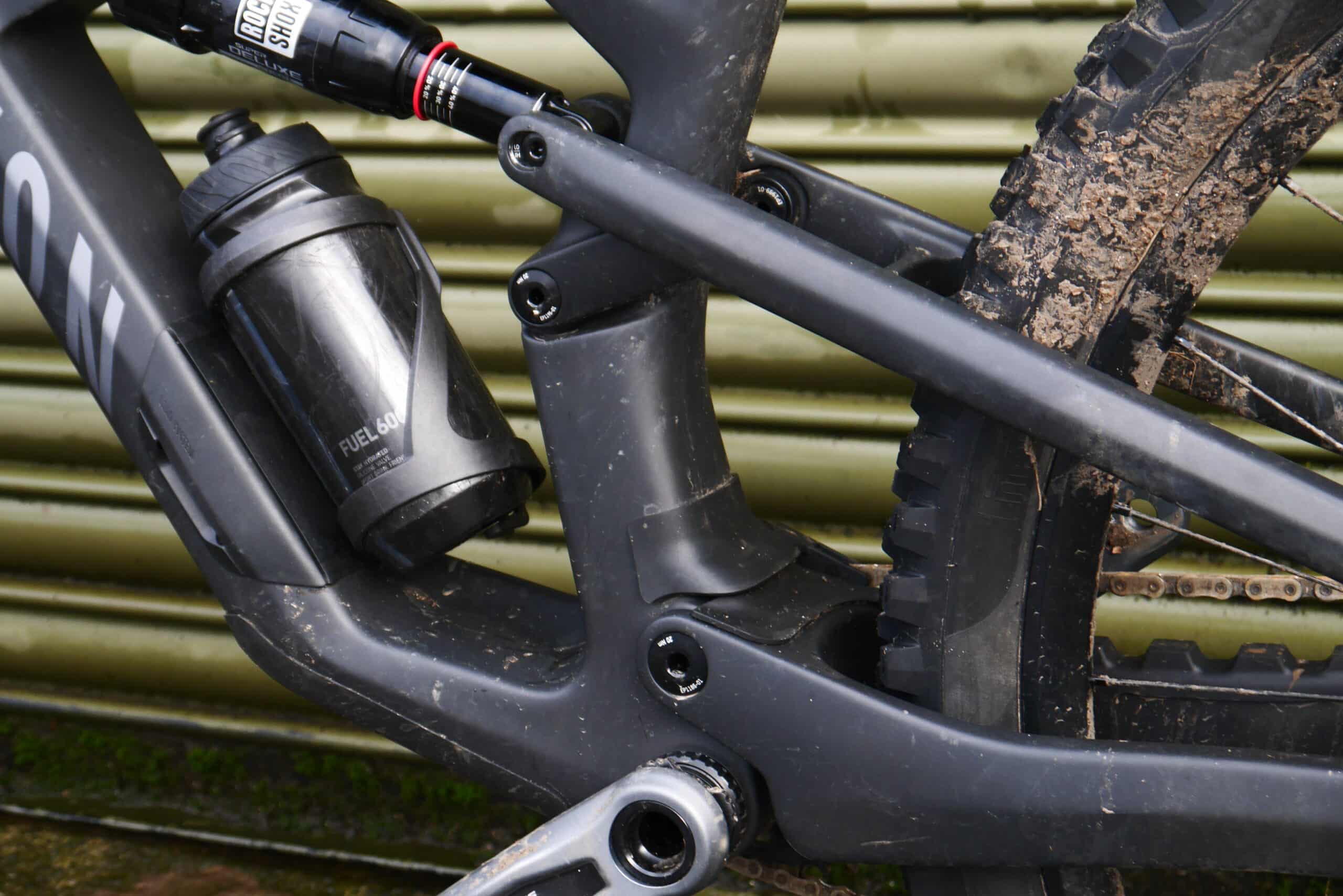
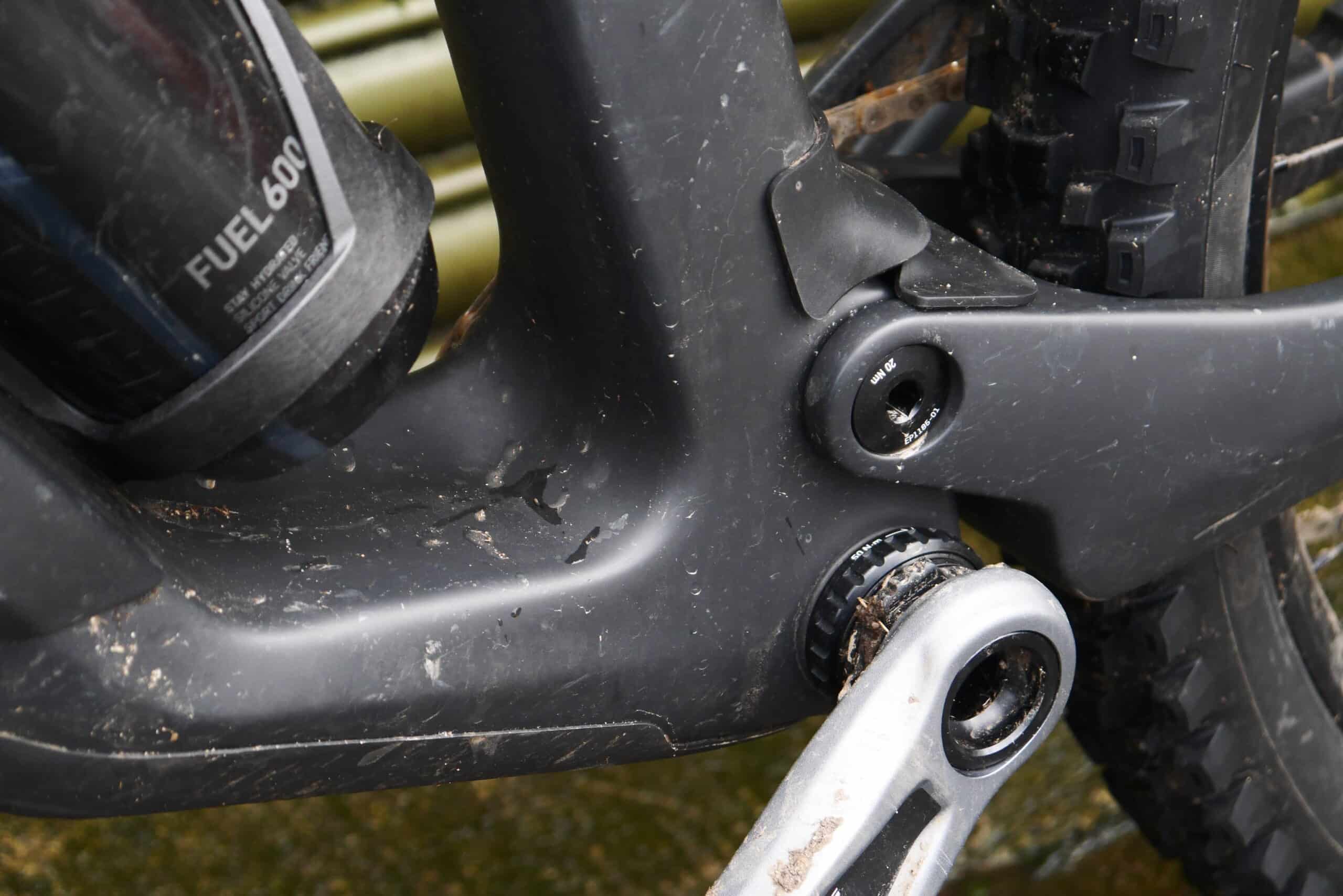
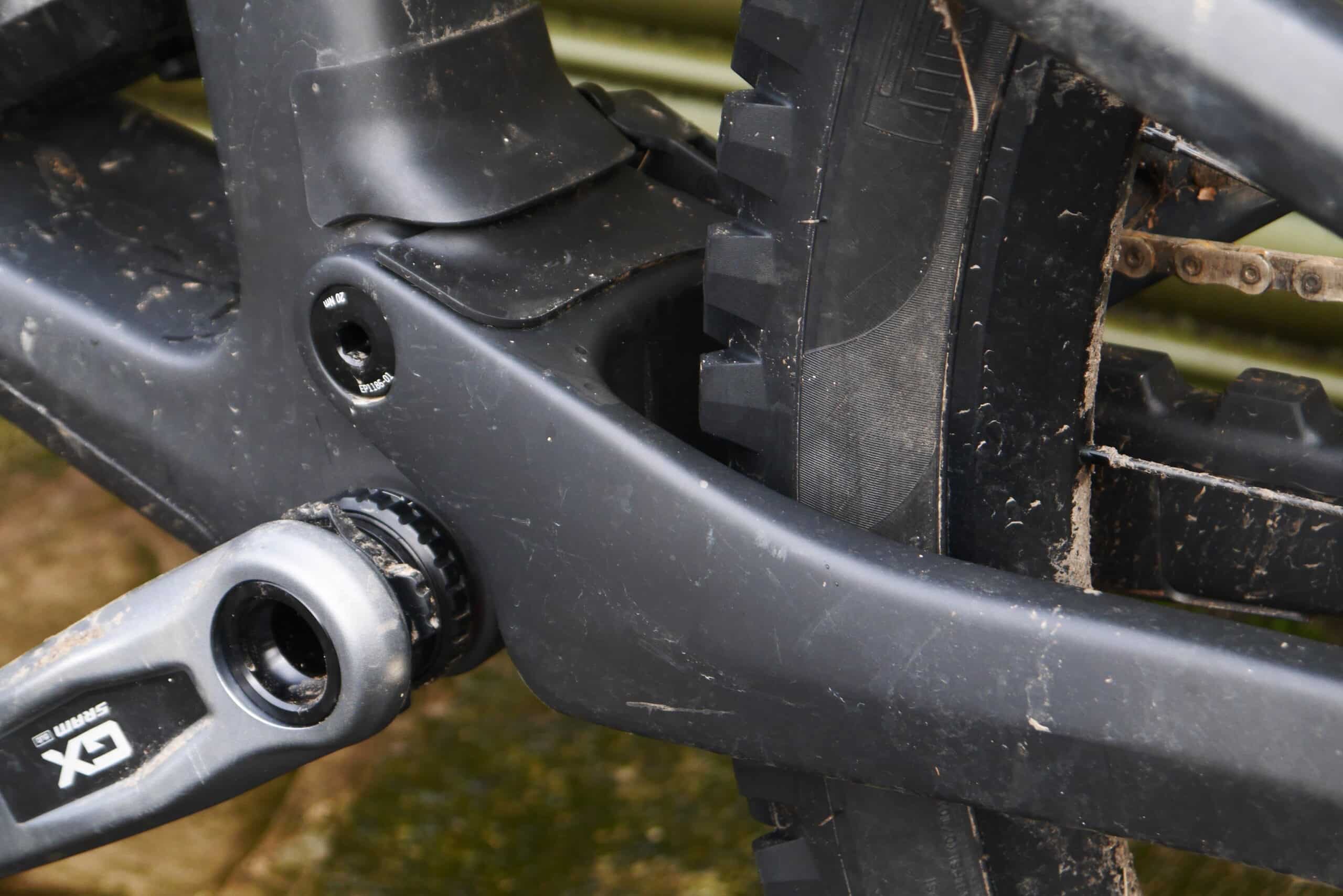
The front triangle is very compact generally and has very oversized tubes. The down tube is noticeably broad. The top tube, while slim in one profile, is also broad. And there’s a lot of material behind the headtube. The girthsome seat tube now takes a 34.9mm seat post.
Not only that, but where the front meets the back has also seen some en-stiffening (my word); the rocker linkage is now a one-piece affair. All this stiffness is partly to try to make sure the rear suspension remains as unaffected as possible from doing its suspending duties by frame flex-induced shock binding.
To also help the suspension behave at its best for as long as possible, Canyon have stuck with their double-sealed frame bearings which are filled with Canyon’s preferred grease. Whilst we’re talking about pivots and stuff, the pivot hardware now holds the spacers and the seals together for less fiddling/dropping-under-the-fridge-ness.
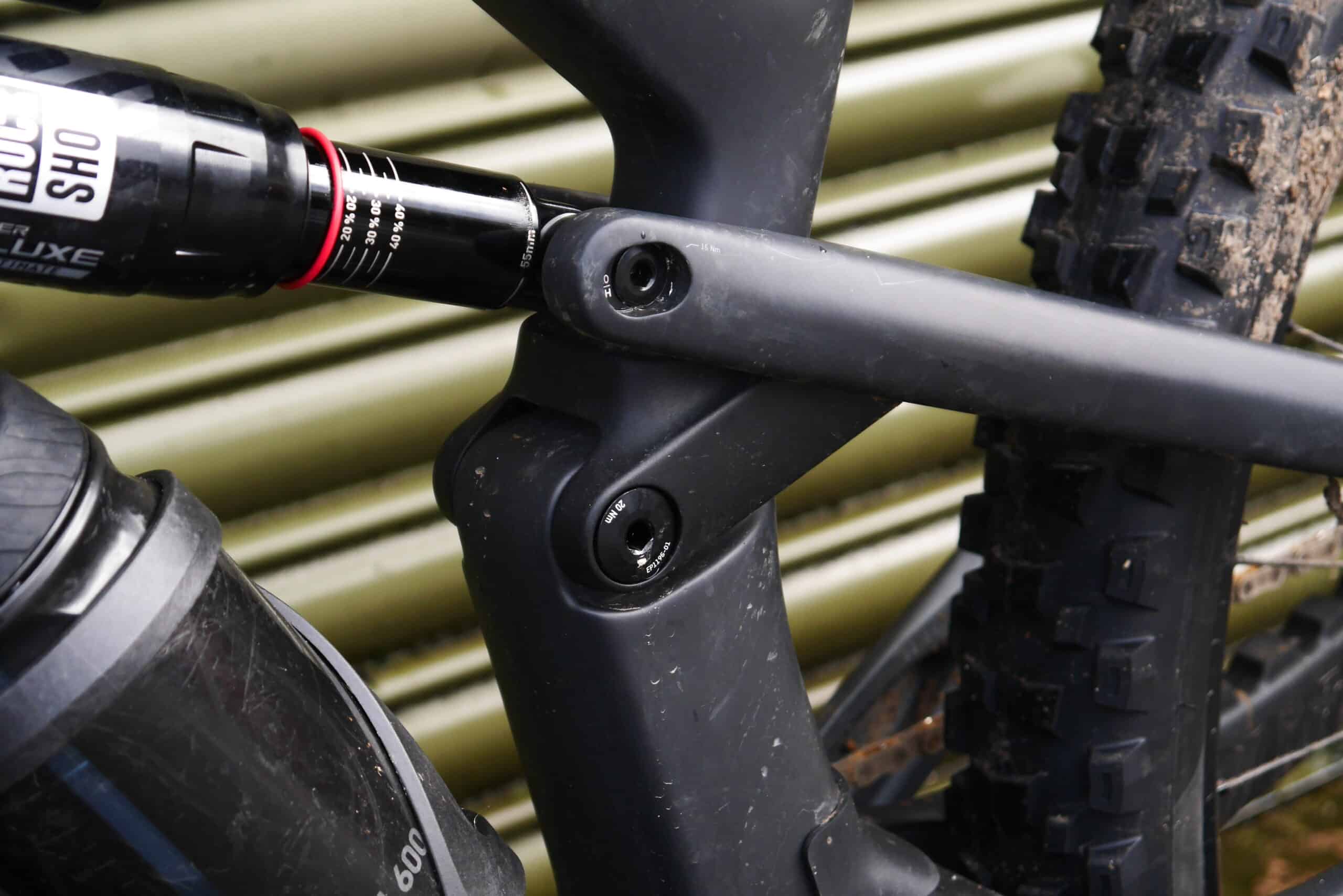
It’s worth pointing out that the rear shock mounts in a very trad way. There’s no trunnion nor bearing mount here. Just a set of 30 x 8mm/40 x 8mm bushings. Shock size is 210 x 55mm by the way.
Protection and packages
Some other nice, practical touches include: replaceable threaded inserts (so a stripped thread won’t result in a dead frame), fully guided internal cable routing with some tweaked user-friendlier access ports, and a two-part mudguard array helps to protect the main pivot from filth ingress.
Talking about rigid rubbers, Canyon has upped the protection levels on the chain stays and the seat stays. The chain stay protector in particular has grown and now covers the Horst Link area. In related chain-slappy news, there’s a neat top chain guide. And for all those ISCG fans out there, you’ll be able to get an ISCG plate if you really want one.
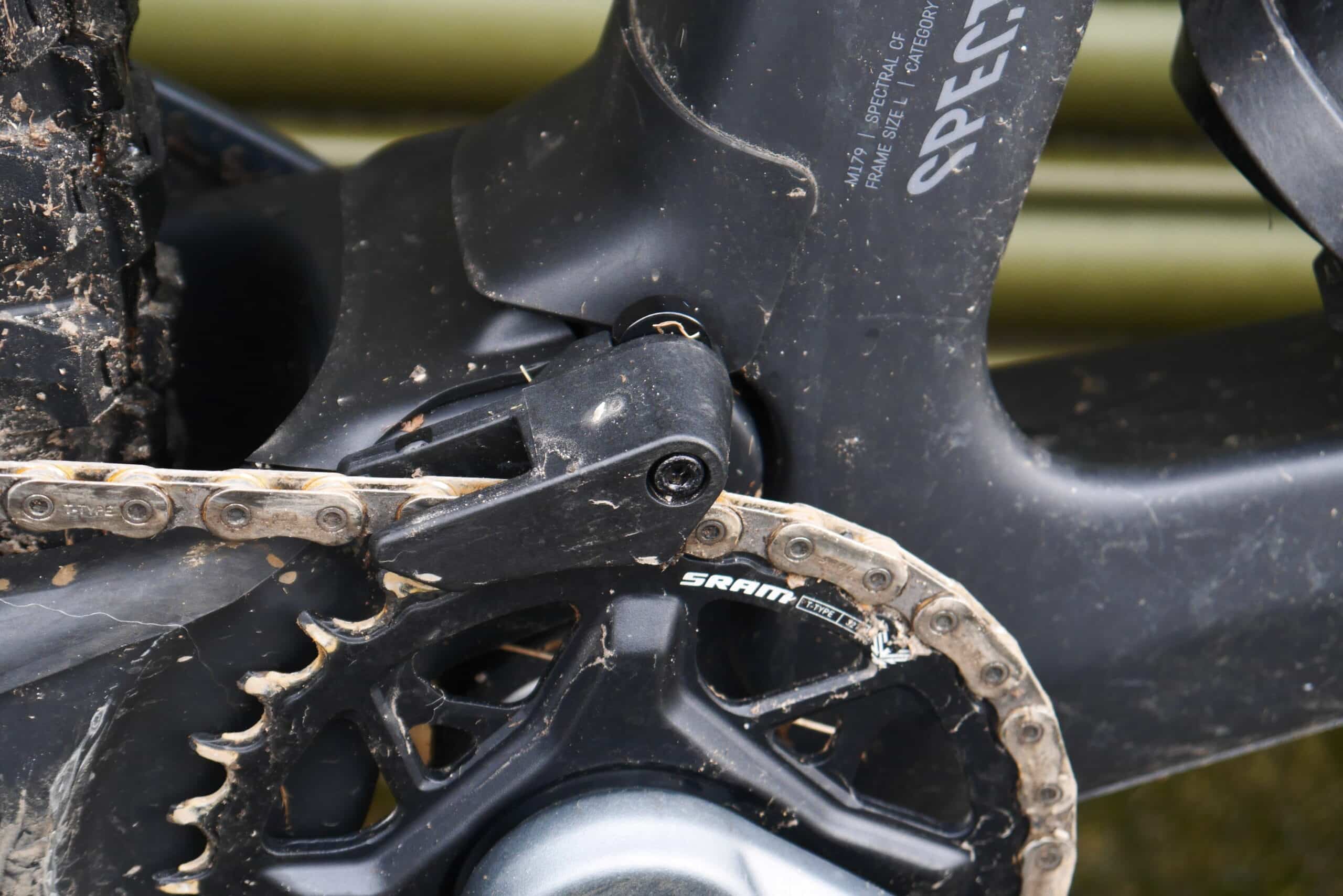
Oh and yeah, there’s frame storage in the down tube. To combat water ingress into the down tube storage compartment there’s a very positive snap-shut opening mechanism. The lid’s hinge pins are stainless steel and the attached bottle bosses are brass. It’s as weatherproof as is feasible, essentially.
Canyon will be offering a Canyon Tool Bundle as option for folk to buy. This is a bespoke water-resistant bag that comes with an inner tube, a CO2 canister, a CO2 chuck and a set of tyre levers.
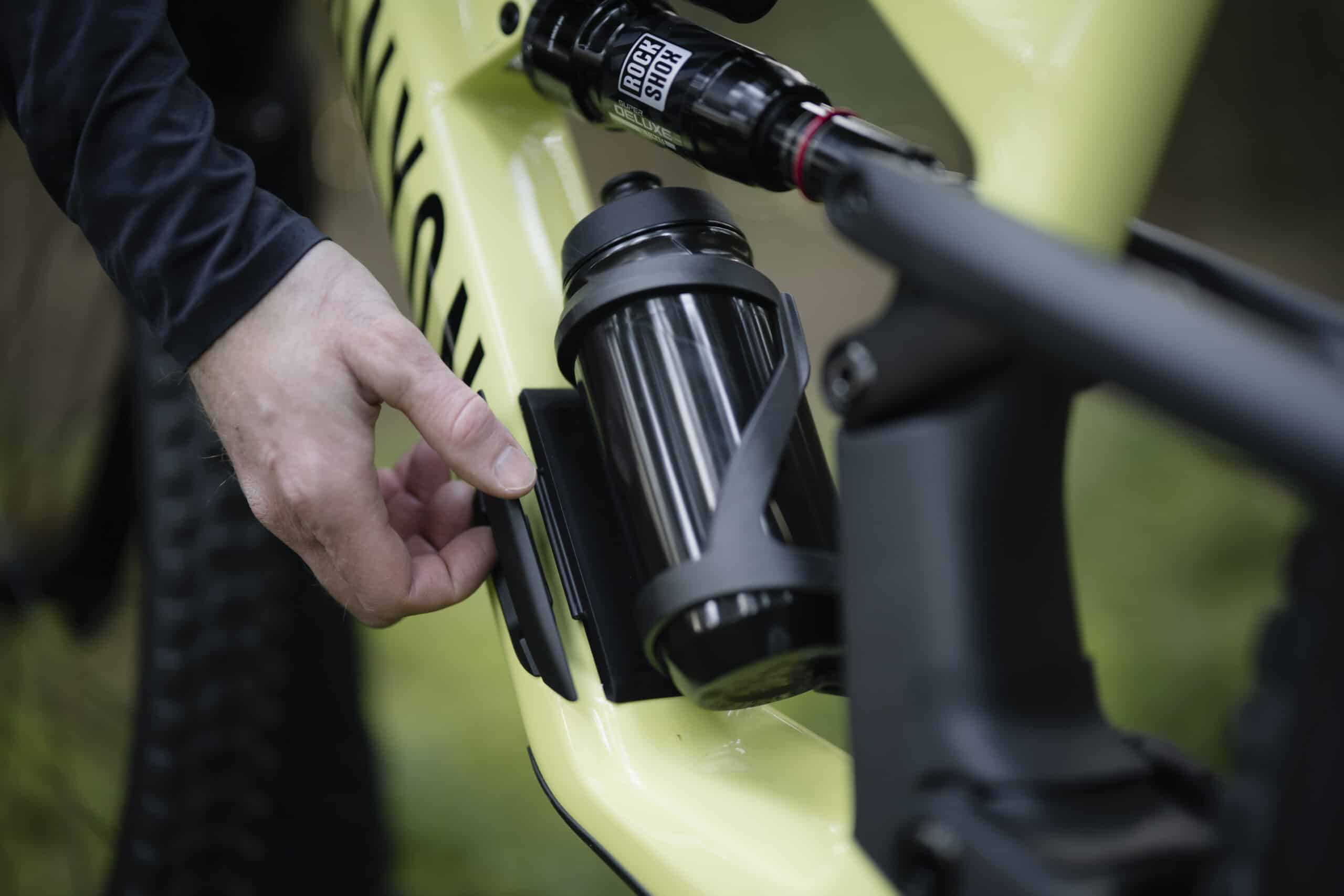
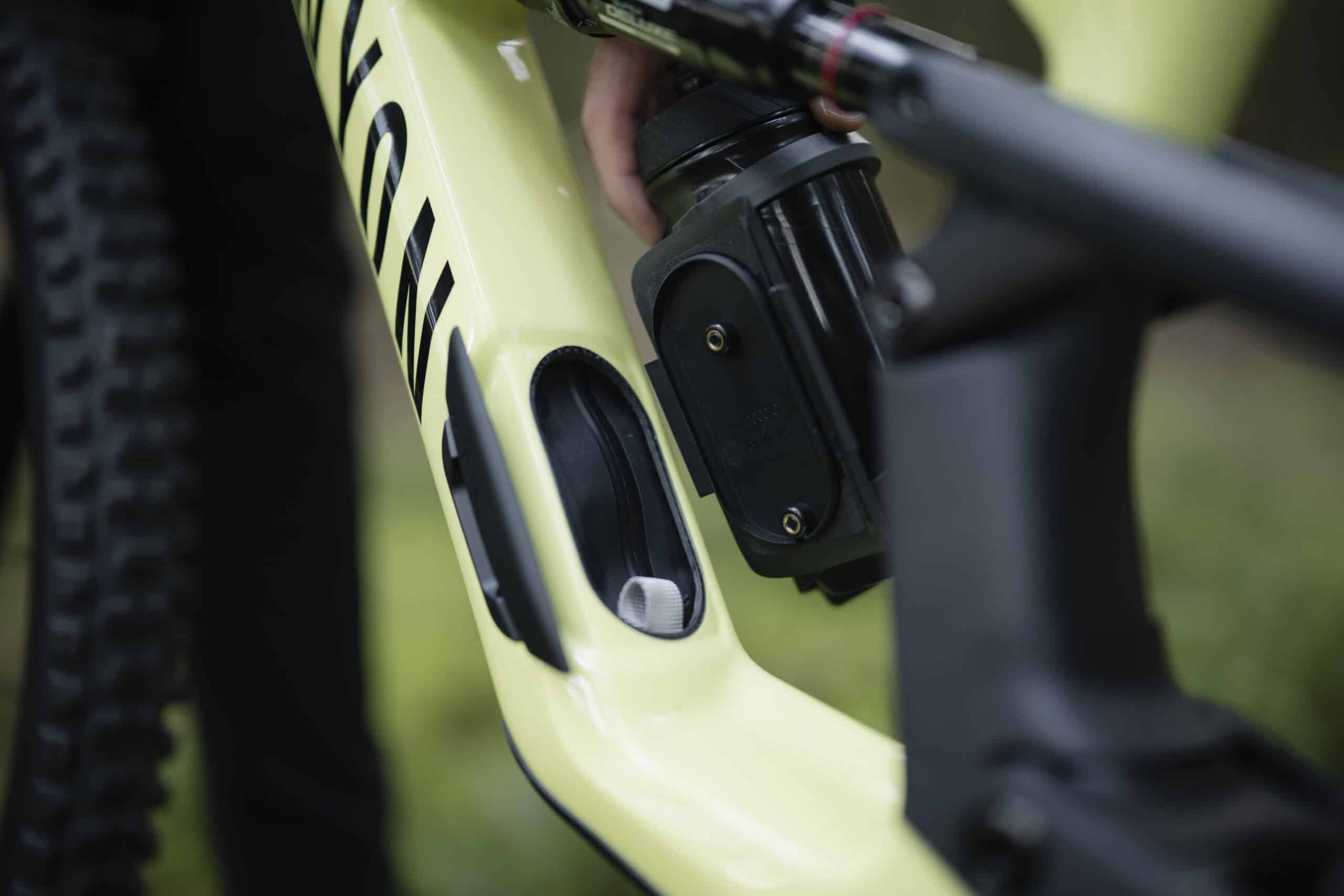
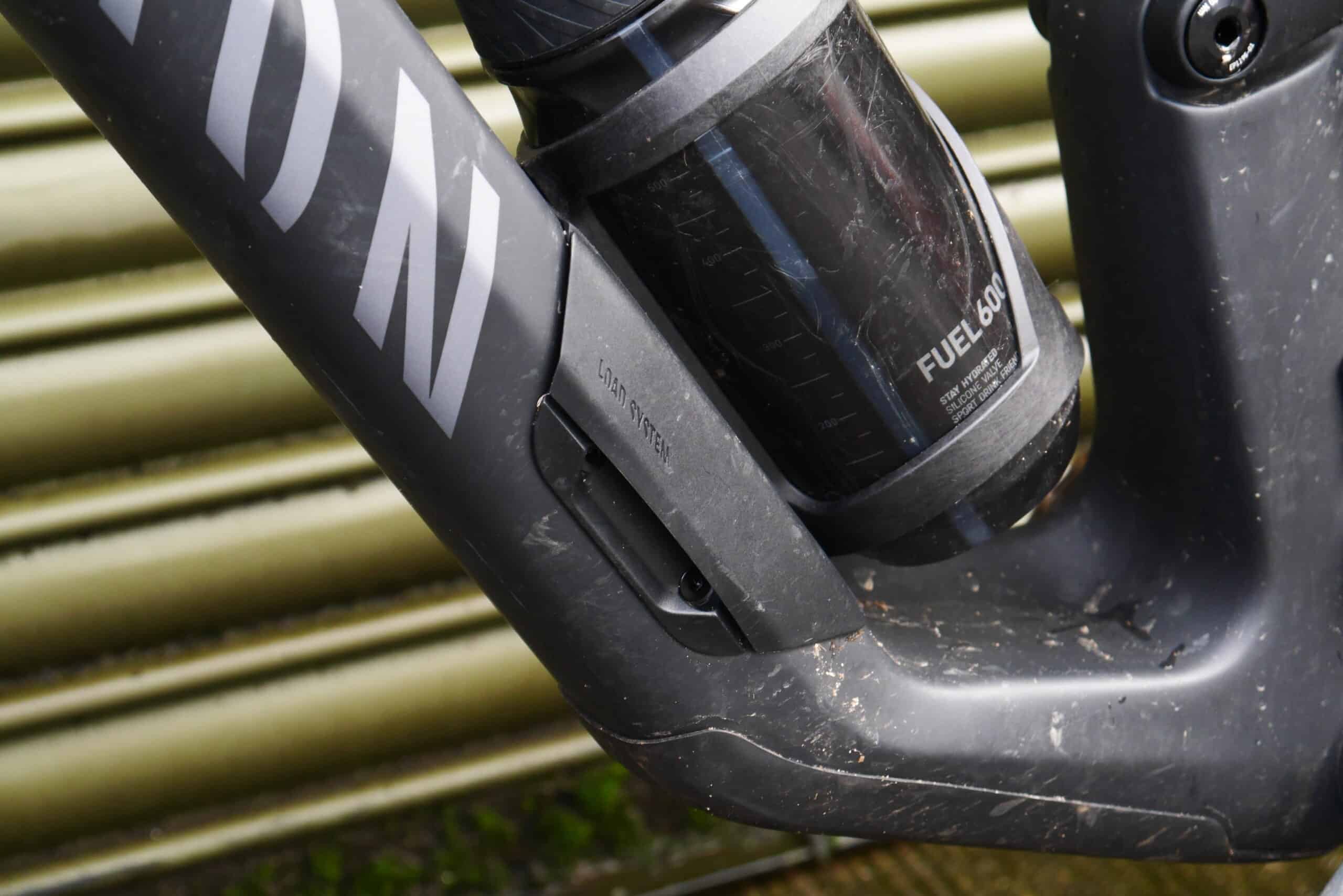
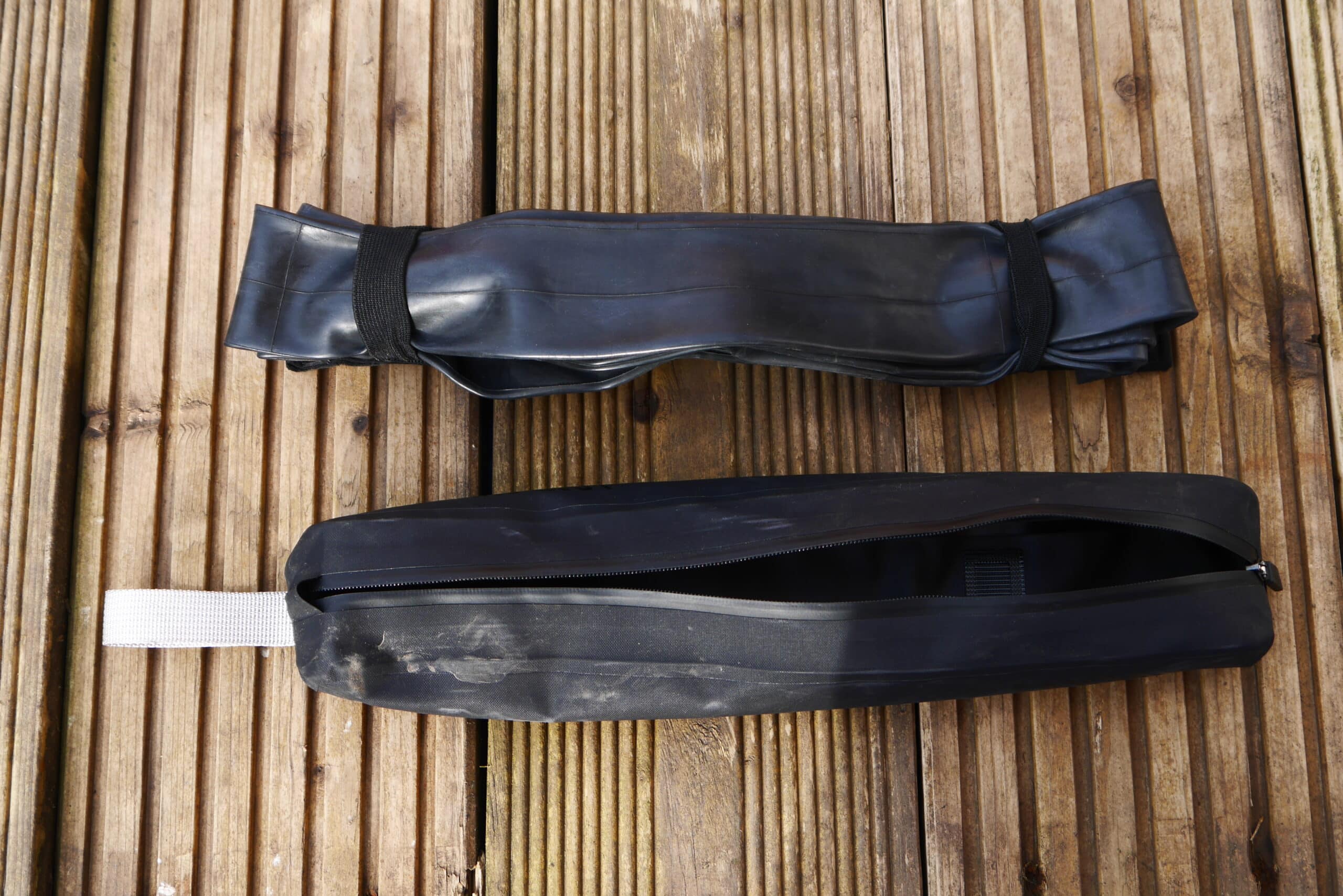
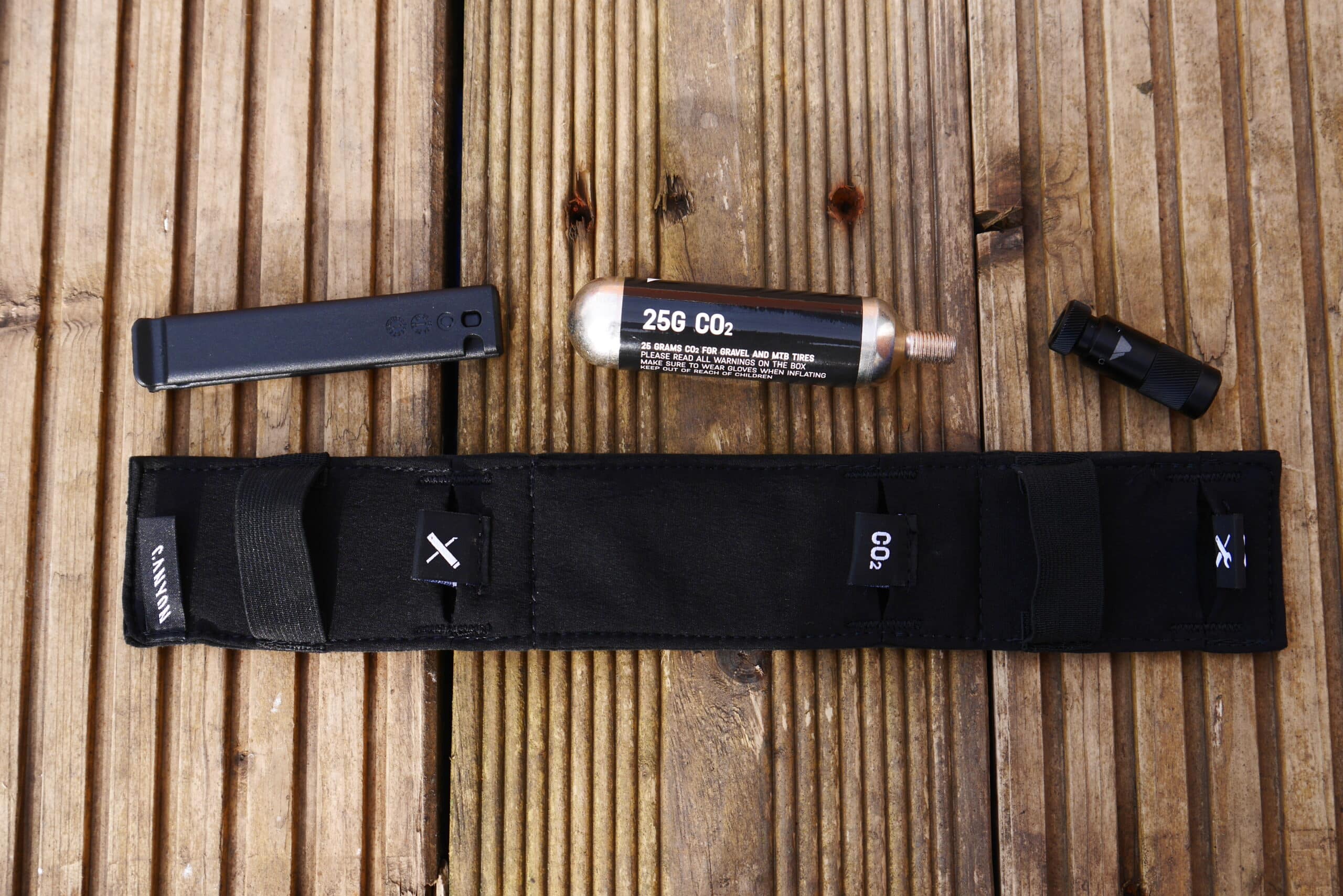
There’s space for a 600ml water bottle which will need to be adhered via side-loading cage or else you could go for a Fidlock system. There’s also a set of accessory bolts on the underside of the top tube (which is holding a Canyon multitool in the photos shown here).
29er or mullet
There’s a geometry flip-chip is the swingarm shock mount. This does not convert the bike from 29 to 27.5. It’s a geometry attitude adjustment for all the Spectrals. The flip-chip raises/lowers the bottom bracket height by 8mm and adjusts the frame angles by +/-0.5°. I don’t expect many folk to use this flip-chip in the High setting, although I’d be interested in using it in HIgh mode as and when I experiment with sticking a 27.5in wheel in the back.
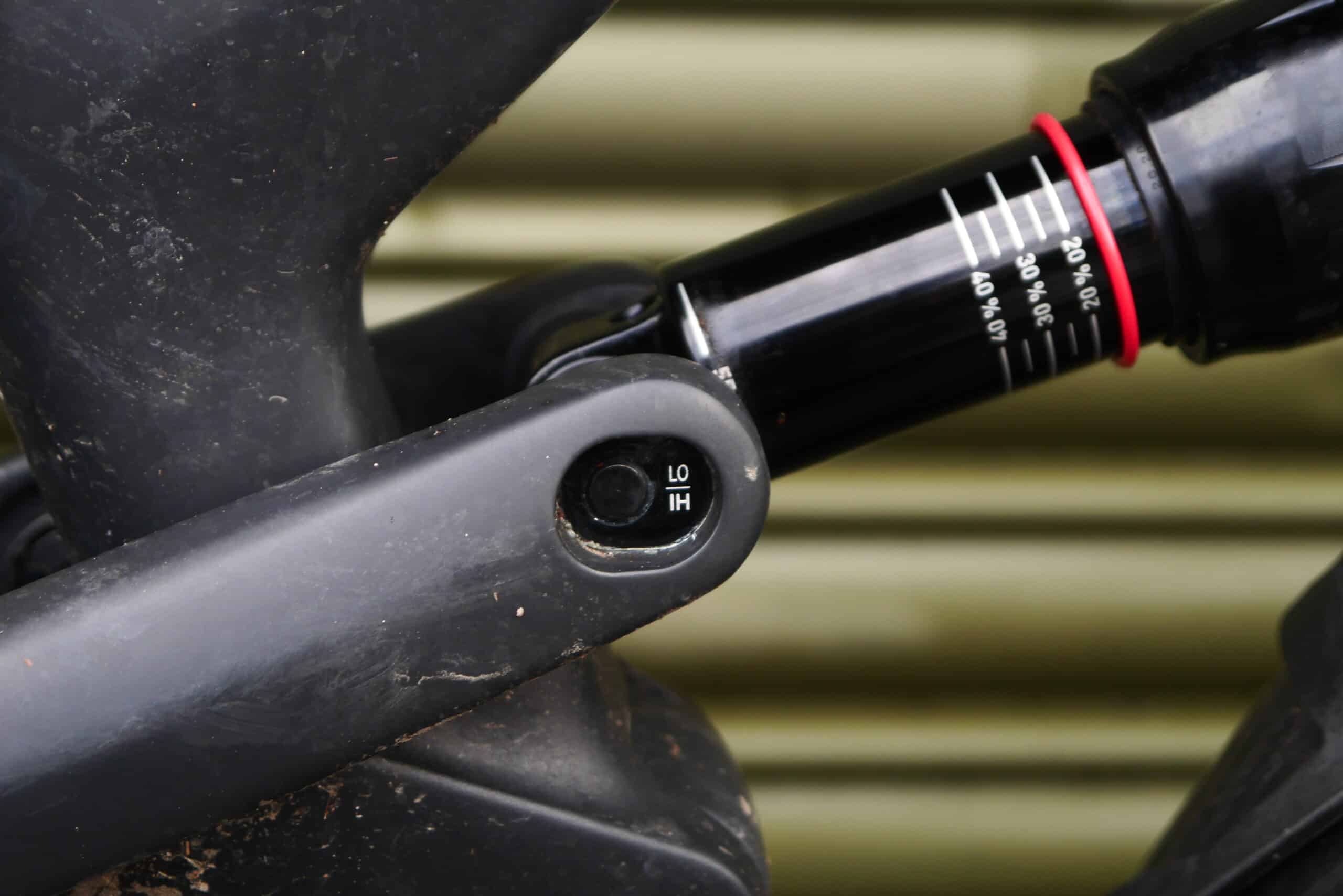
Which brings us to the chainstay flip-chip. This is very much like the one found of recent Specialized bikes. It switches the bike’s back end between 29 and 27.5in flavours. As well changing the stay length (437mm for 29, 429mm for 27.5) it adjusts the BB and frame angles or rather it maintains the BB/angles regardless of wheel size.

Regardless of what the rear wheel size is, it’s fair and correct to say that the suspension leverage curve is a bit more linear (less curvy) than previous Spectrals. This should result in a more consistent and predictable feeling with no ‘missing’ areas of support nor excessively rampy zones. The rear suspension will work fine with air or coil shocks by the way (as pretty much any frame that isn’t excessively falling-rate does, in my experience).
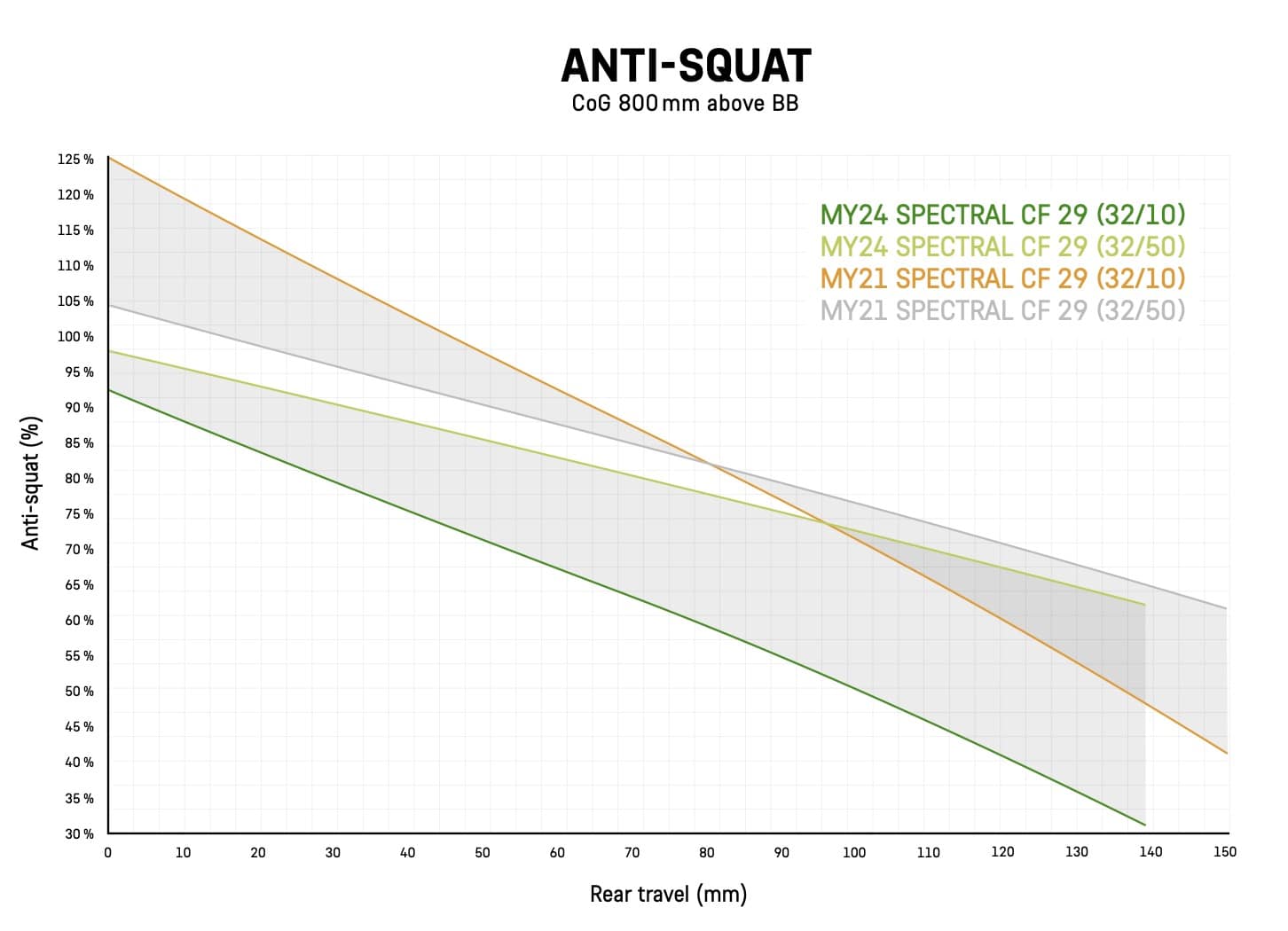
It’s the anti-squat numbers that have seen a bit of reworking for the new Spectral. Basically, there’s less anti-squat. The idea being to trade in a bit of pedaling repsonse in return for some increased traction. The anti-rise apparently remains broadly the same previously (I’m not suire I’ve ever encountered anti-rise doing anything significant on a bicycle but hey. Sames is sames.)
I’ll be trying the bike out with a 27.5in rear wheel at some point to see what, if any, effects it has on the suspension behaviour as well as the general handling.
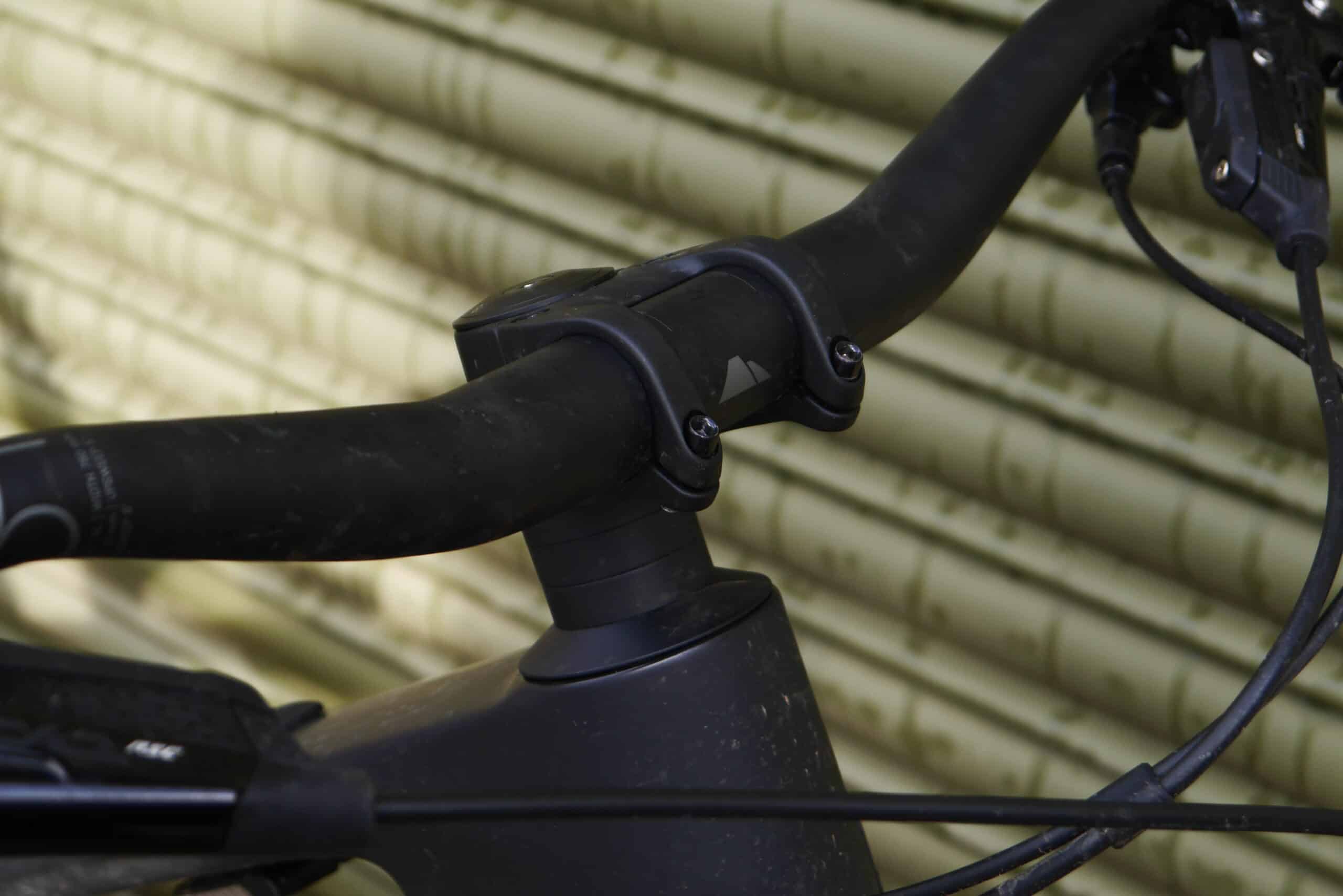
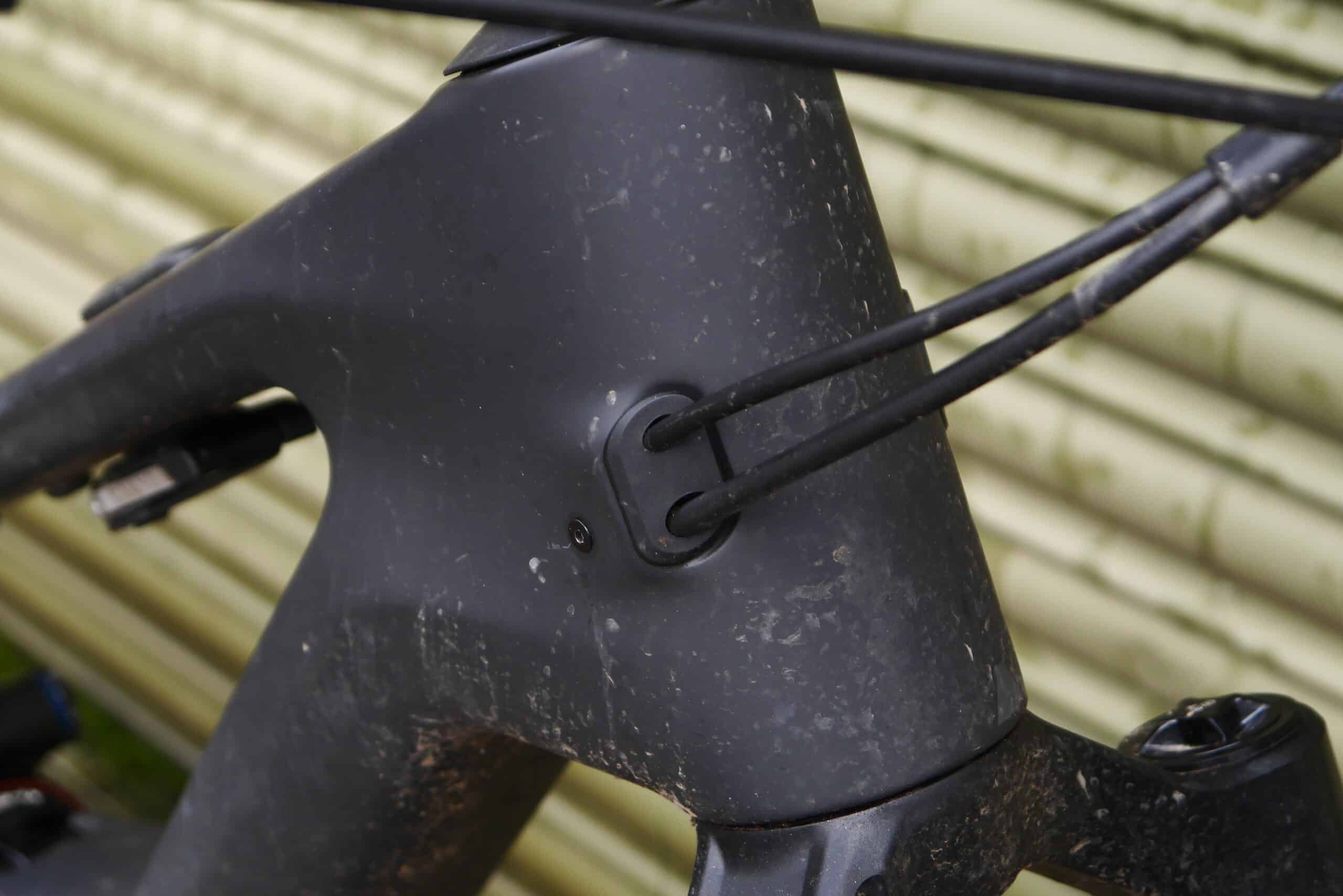
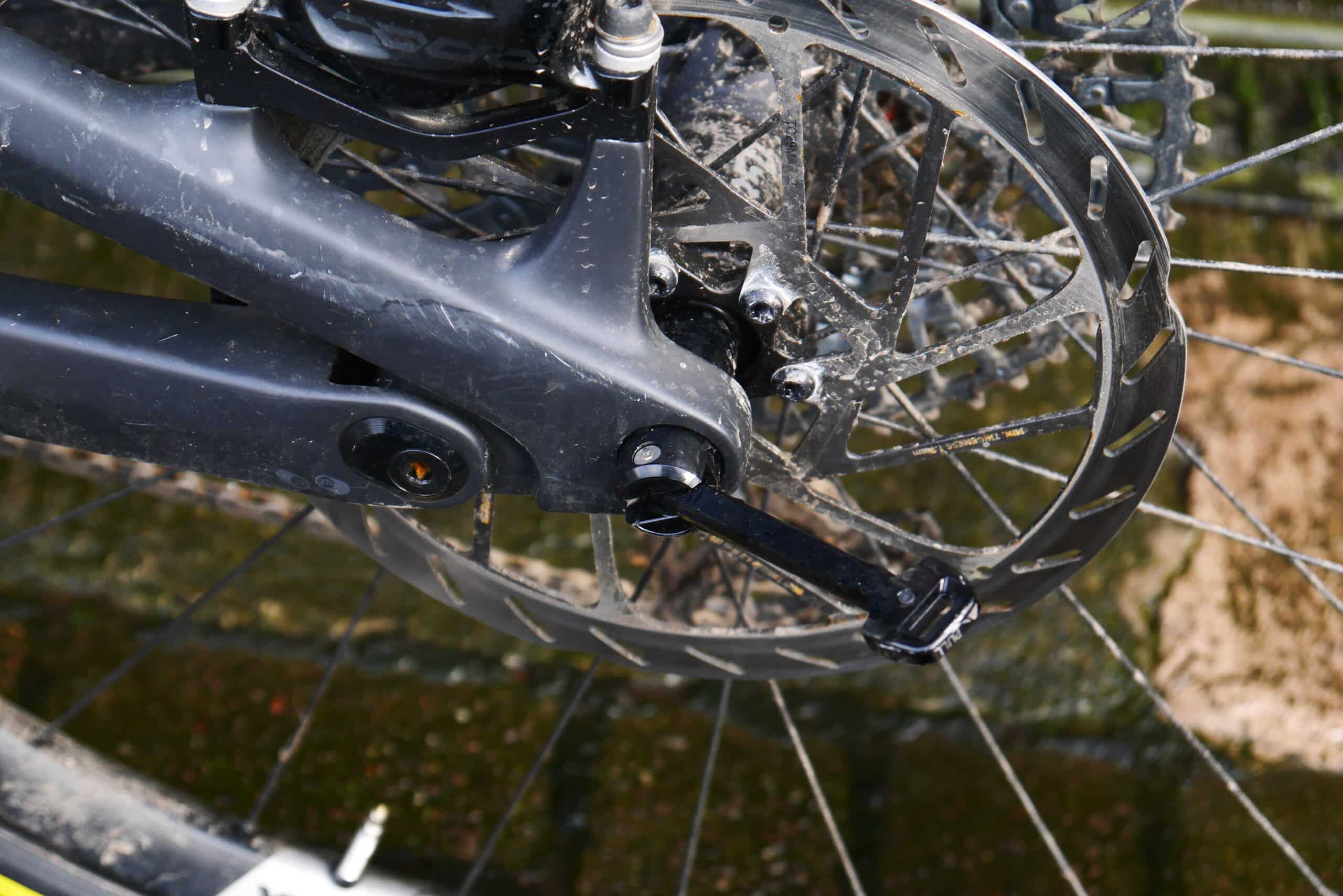
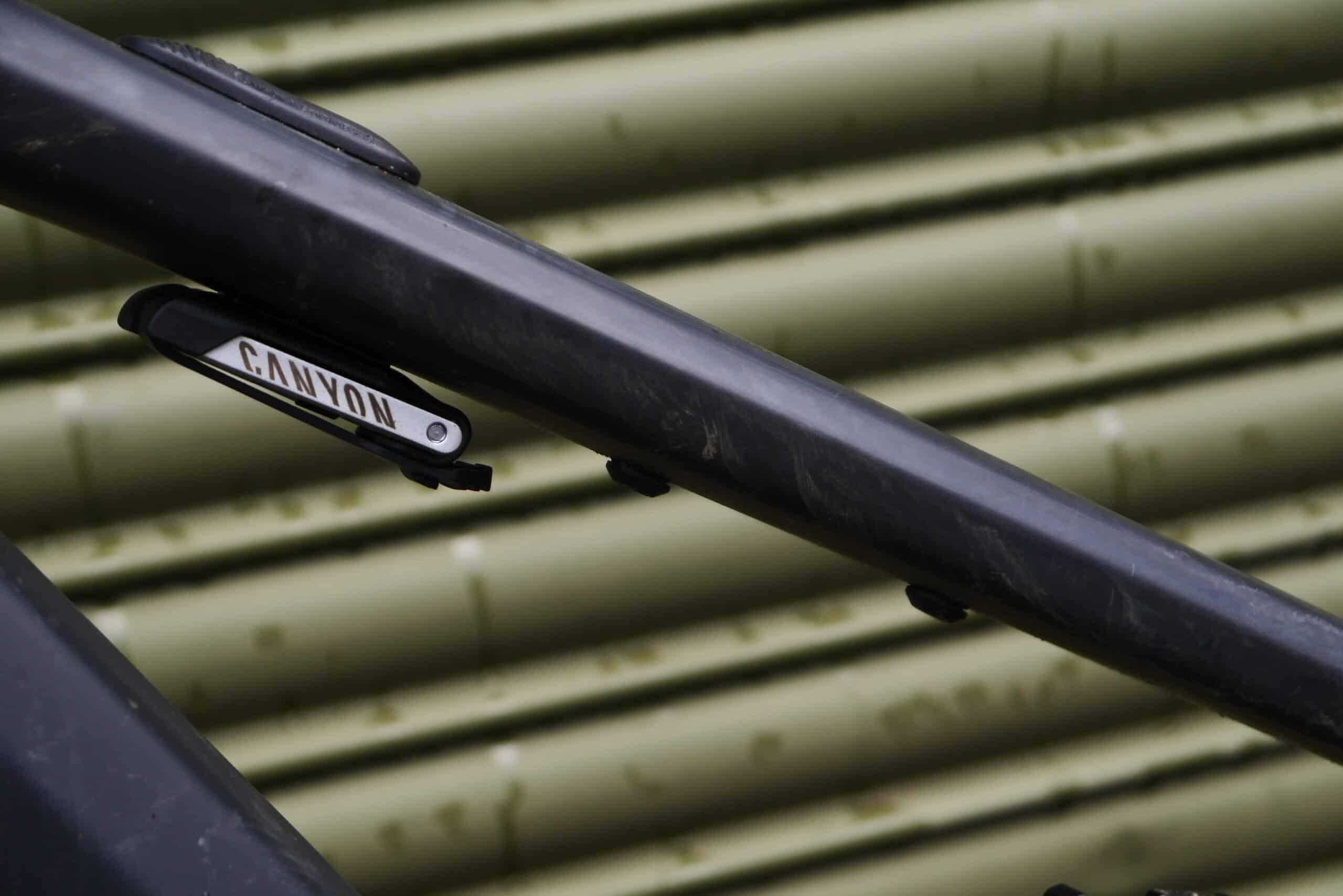
Geometry o’clock!
All in all, the new Spectral is pretty good. Don’t get overly swayed by the huge reach numbers, the rest of the geometry is very much ‘modern normal’. It’s arguably pretty safe nay conservative. The 64° head angle is okay. The 76°ish seat angle doesn’t feel very steep these days. The 437mm chain stays are hella short. The 30mm BB drop is fine. The head tube lengths are good (130mm on this Large). Nothing pioneering here. A couple of figures that may raise the eyebrows of the super-progressives.
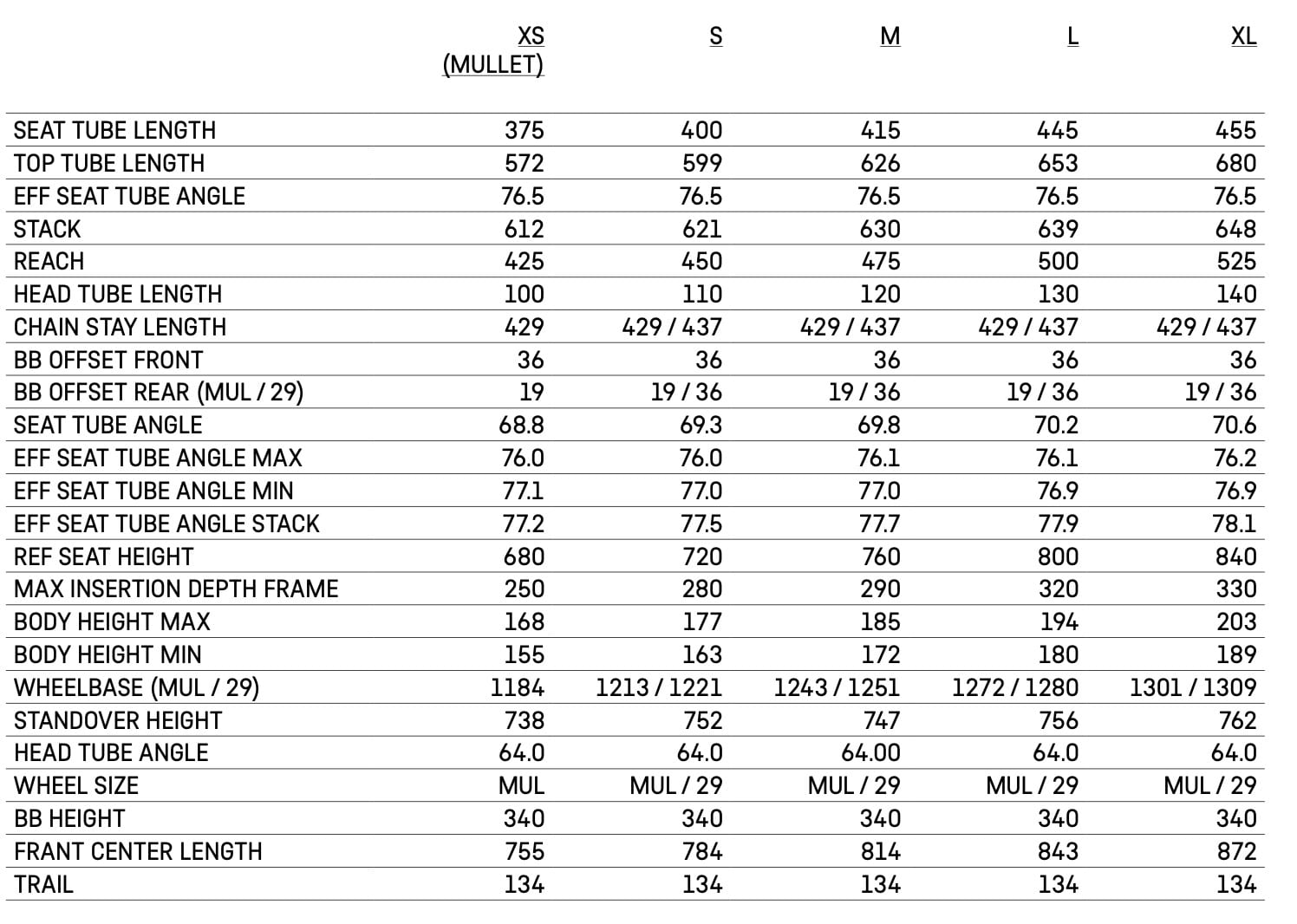
K.I.S. me quick
The elephant in the room with the new Canyon Spectral is that it comes with the brand’s K.I.S. steering stabiliser. I actually don’t want to spend/waste time describing this, because I’ve already explained it here. Suffice to say, Canyon has toned the spring strengths down. And it is also fully removable (the bike comes with a blanking plate to put in place on the top tube should you choose to live your life without K.I.S.).
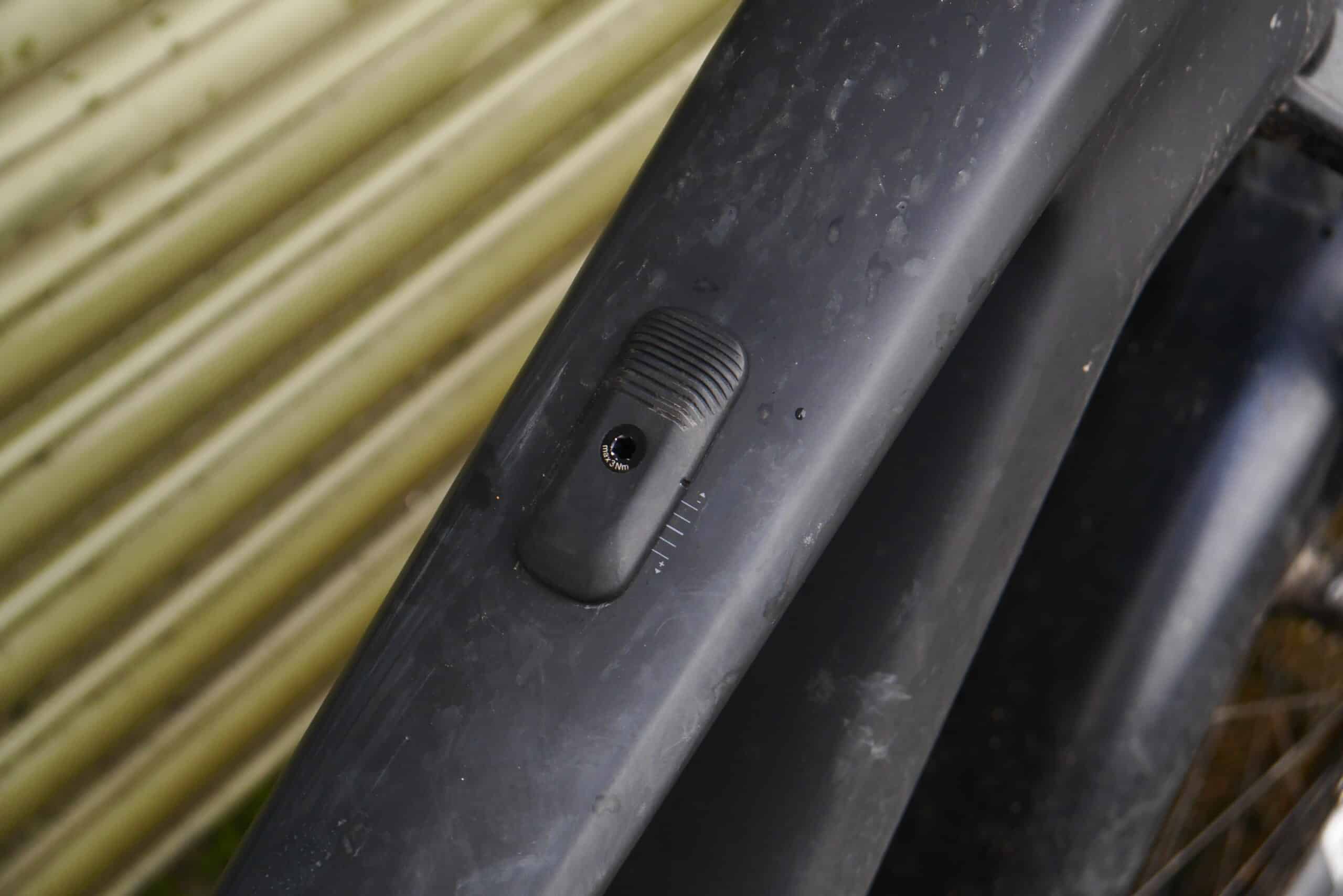
Even back-to-back testing with bikes without K.I.S., and testing the system at minimum and maximum levels of tension, I struggled to detect the system doing much for me. I guess I just don’t hurtle across the right sort of terrain at the right sort of speeds that it supposedly aids with. K.I.S. wouldn’t put me off buying the Spectral but I would probably remove it pretty quickly. Sorry (not sorry) Canyon.
Build kit breakdown
That’s enough about the frame. Let’s have a look at the spec list, front to back.
Generally speaking, I was very happy with the front end. The 150mm travel RockShox Lyrik Ultimate is a great fork. Whilst it arguably rides a bit low/deep into its travel it doesn’t do anything weird or surprising and the damping dials do actually do useful stuff.
The new G5 stem is a nice design. And hurray for normal headsets. There’s no thru-routing here. Nor is there any of Canyon’s previous proprietary shaped/keyed design that prevented you easily using aftermarket stems or even playing about withe spacer height. The new Spectral just has a normal stem, spacer and headset configuration. TTFT.
The 780mm bars are just about wide enough and whilst I’d like a higher rise bar, running all of the stem spacers put my hands at a good height without robbing me of reach too much. And yeah, 31.8mm is the best bar diameter.
The SRAM Code RSC brakes were very good. Loads of power with a nice firm feel. Similarly pleasing was the wireless SRAM GX AXS Transmission which I reviewed recently. The latter was made even better by the speccing of the ‘old’ shifter/rocker instead of the newer ‘pod buttons’ design.
As I’ve stated a few times before, Canyon’s lock-on grips are horrid things. Hard and slippery. They really do impair the overall experience of Canyon mountain bikes. Which is why I swap them out immediately.
Shock tune
In the middle of the bike there’s a RockShox Super Deluxe Ultimate air shock. This offers a fair number of adjustments: rebound, low speed compression, high speed compression and lock-out. Ultimately (ha!) I’m still trying to find a setup that I’m happy with. I’ve experienced pretty harsh bottom outs on the same settings as I’ve experienced being bucked off my pedals. And quite a lot of pedal bob.
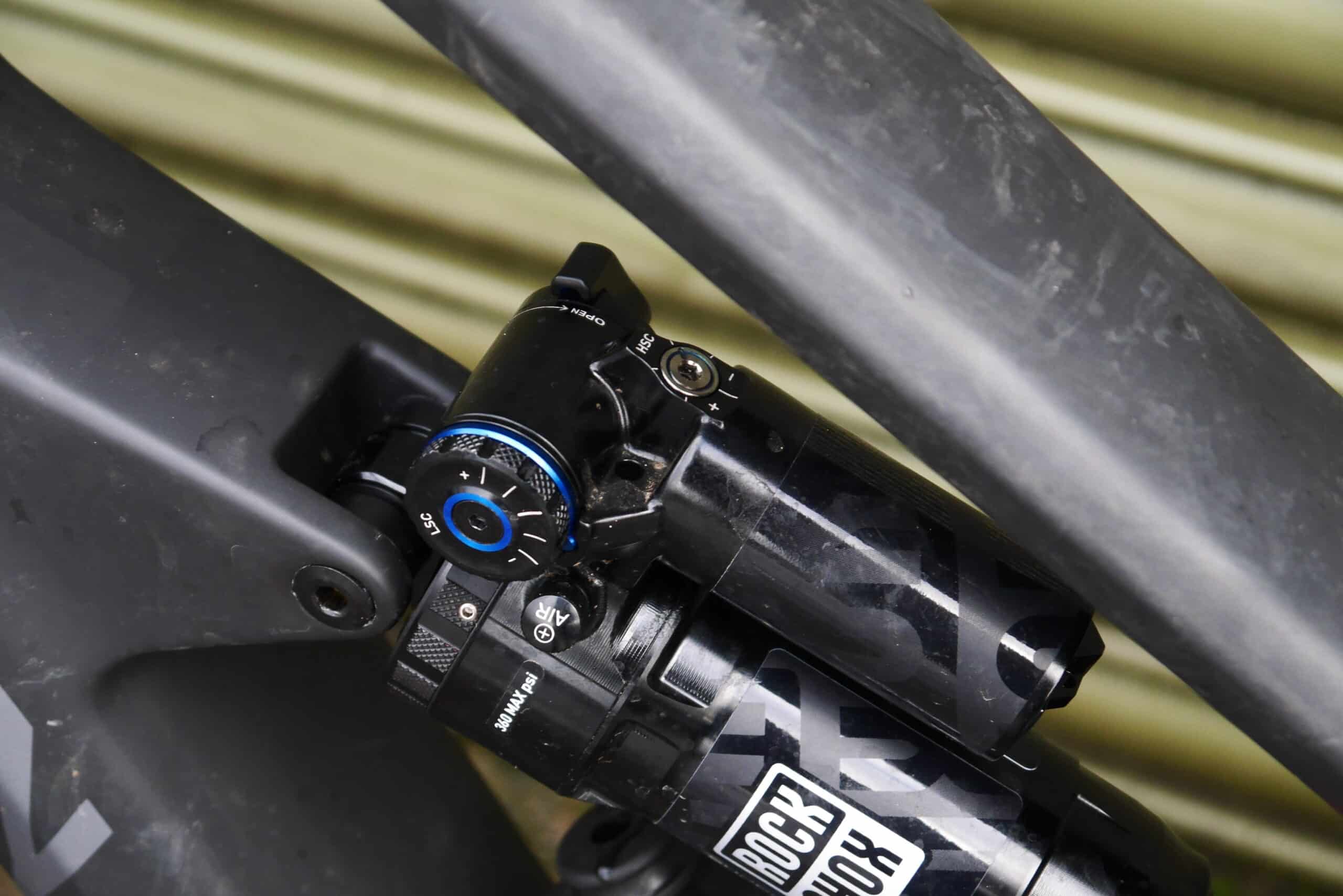
For my weight and/or riding ‘style’, it feels like the stock tune has a lot of high speed compression. On groomed or maintained trails, the bike felt fine and thrillingly fast (I didn’t mind the occasional bottom-out off drops) but on rougher, more unpredictable terrain, the bike felt a bit skittish at times. Further messing about is required.
(Un)surprisingly, changing tyres improved the bike’s handling significantly. Whilst there’s nothing inherently wrong with a Maxxis Minion DHR II but the specced ones’ EXO/EXO+ casings and firm MaxxTerra compounds did not feel a great match for how fast the rest of the bike wants/needs to go. Sticking a Continental Argotal (Enduro Soft) up front and Pirelli Scorpion Race EN M (Dual Casing) on the rear really helped calm things down when trail speed and roughness increased.
The DT Swiss XM1700 wheelset is a known-known (as Donald Rumsfeld would say) and it’s a good known-known too. A decent rate of freehub pick-up, good width rims and definitely not a causal factor in any of the aforementioned skittishness.
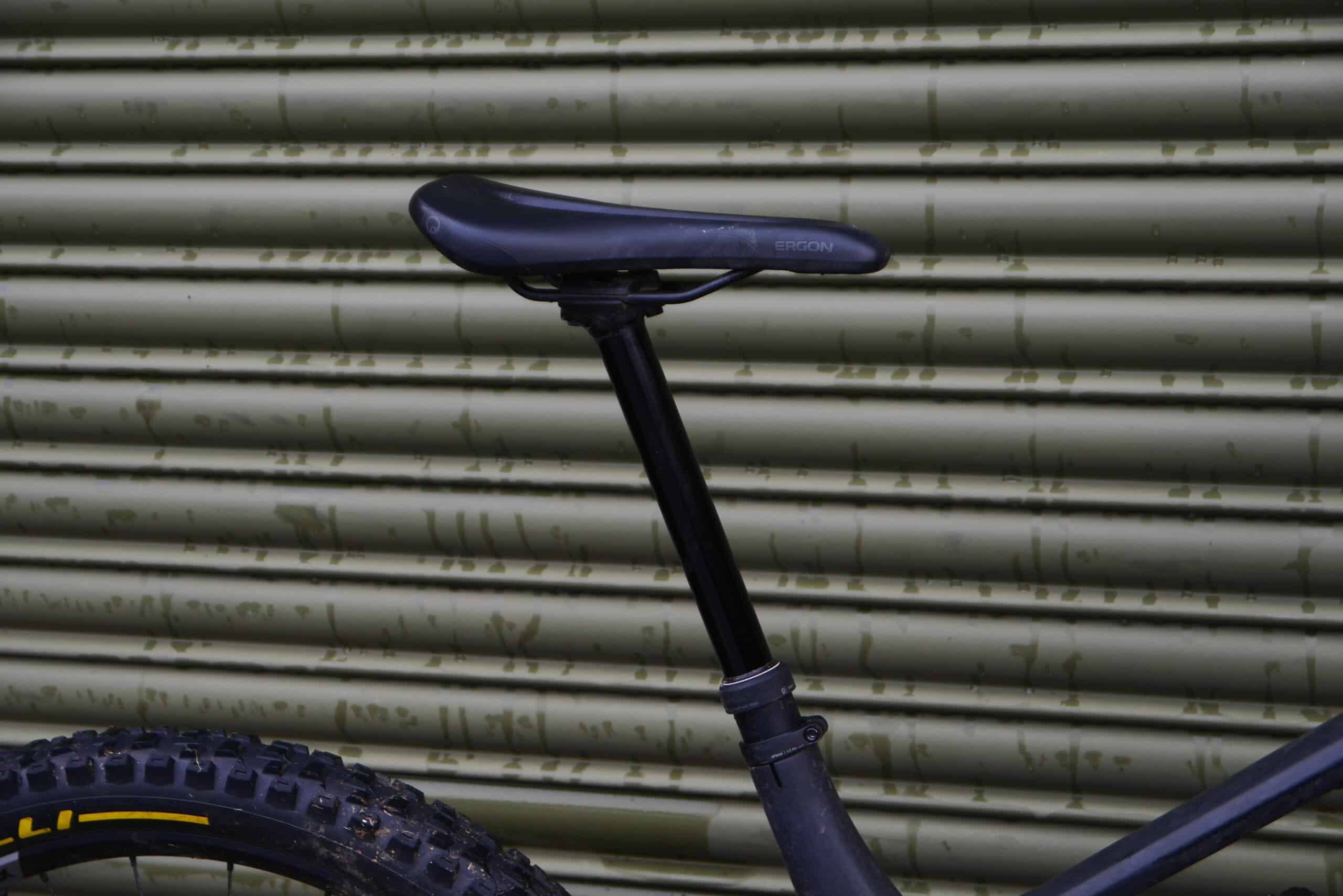
Bringing up my rear (literally) the Canyon G5 Dropper performed flawlessly. And the generous amount of drop combined with the masses of standover, really helps get the bike down super steep stuff even with the not-that-slack head angle.
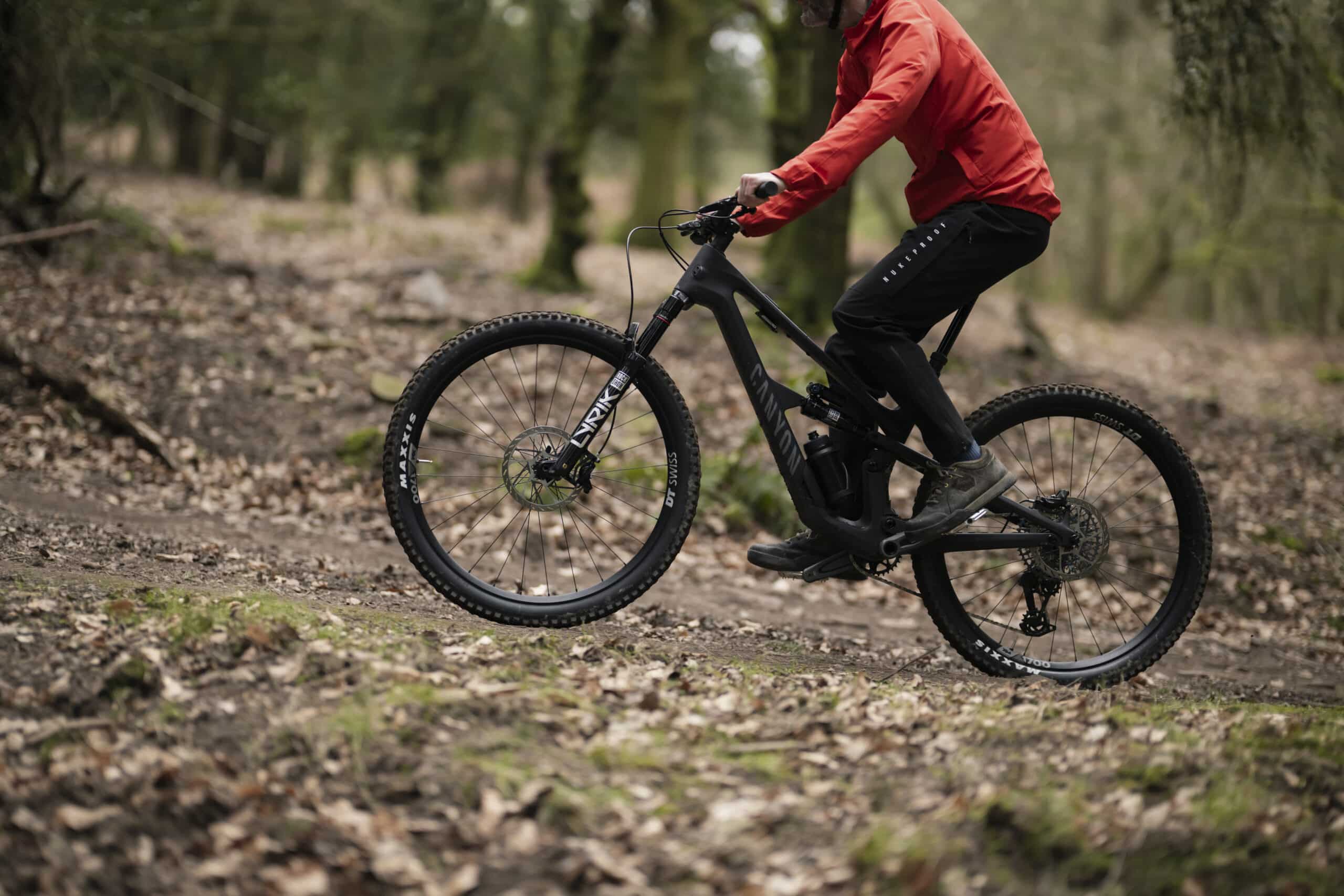
On the trail
The Spectral’s tendency for frequent albeit slight pedal bob can be distracting. Perhaps partly because it was also accompanied by a squeaking noise that developed after a week or so. I found myself opting to use the lock-out switch on the rear shock quite a lot at firs. Eventually I added 2 or 3 clicks of low speed compression and things imporoved greatly. FWIW I left the rebound fully open because adding rebound seemed to rob the bike of performance elsewhere so I opted not to go down that route of countering the bob.
The short chainstays (and not-that-steep seat angle) were a pleasant surprise. I had expected them to enduce a biut of front wheel lightness on super steep, technical ascents but that never proved to the case. The reach of the bike coupled with a shoved-forward sadddle position made for a perfectly decent ascending stance.
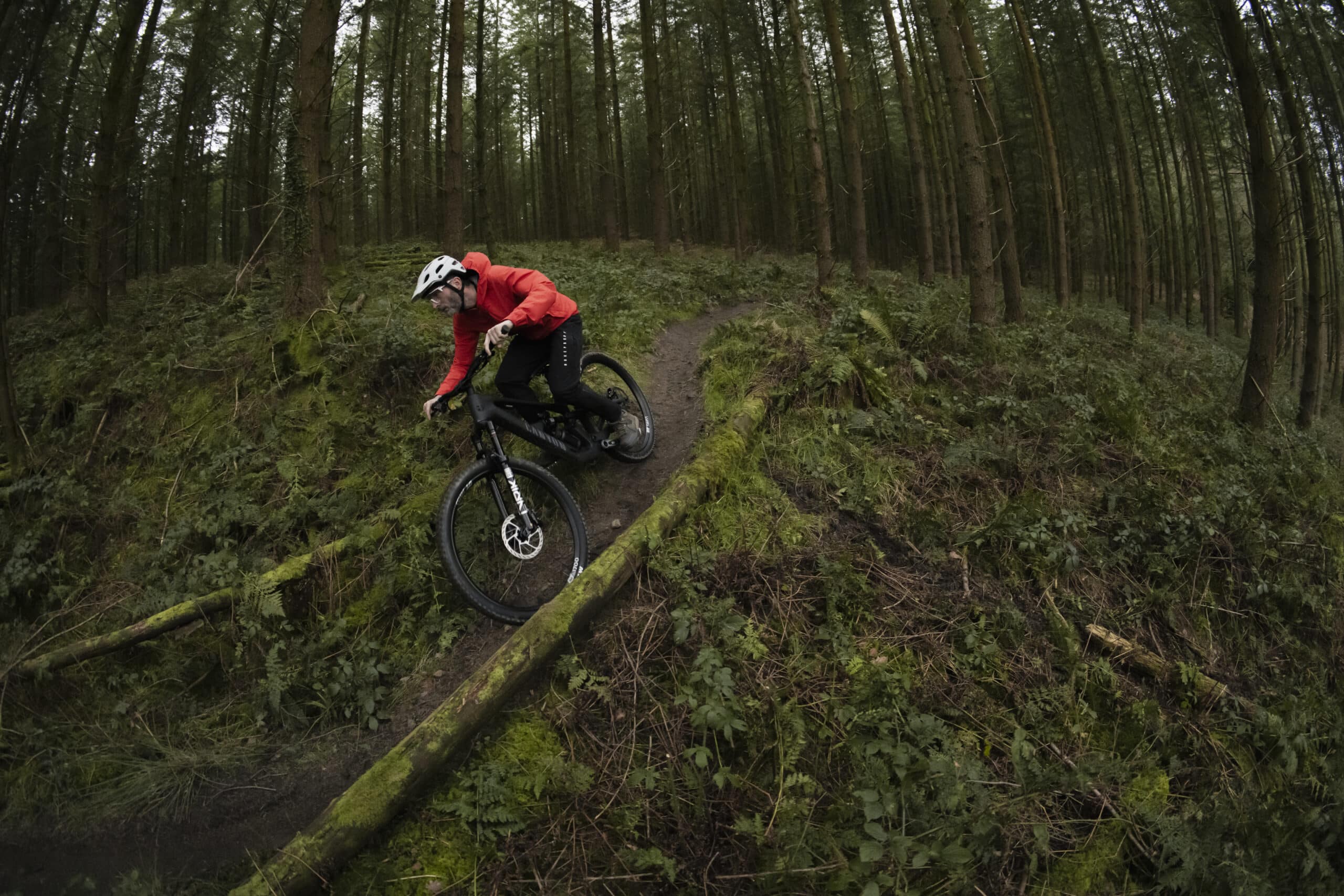
Descending performance very much depended on the trail. Steep stuff was fine. Fast, relatively smooth stuff was fine. But when things got rougher – or an isolated obstacle like a spread of roots suddenly appeared – the bike got upset. I think it may partly have been due to the sheer stiffness of the frame at times, but mainly I point my finger at the rear shock.
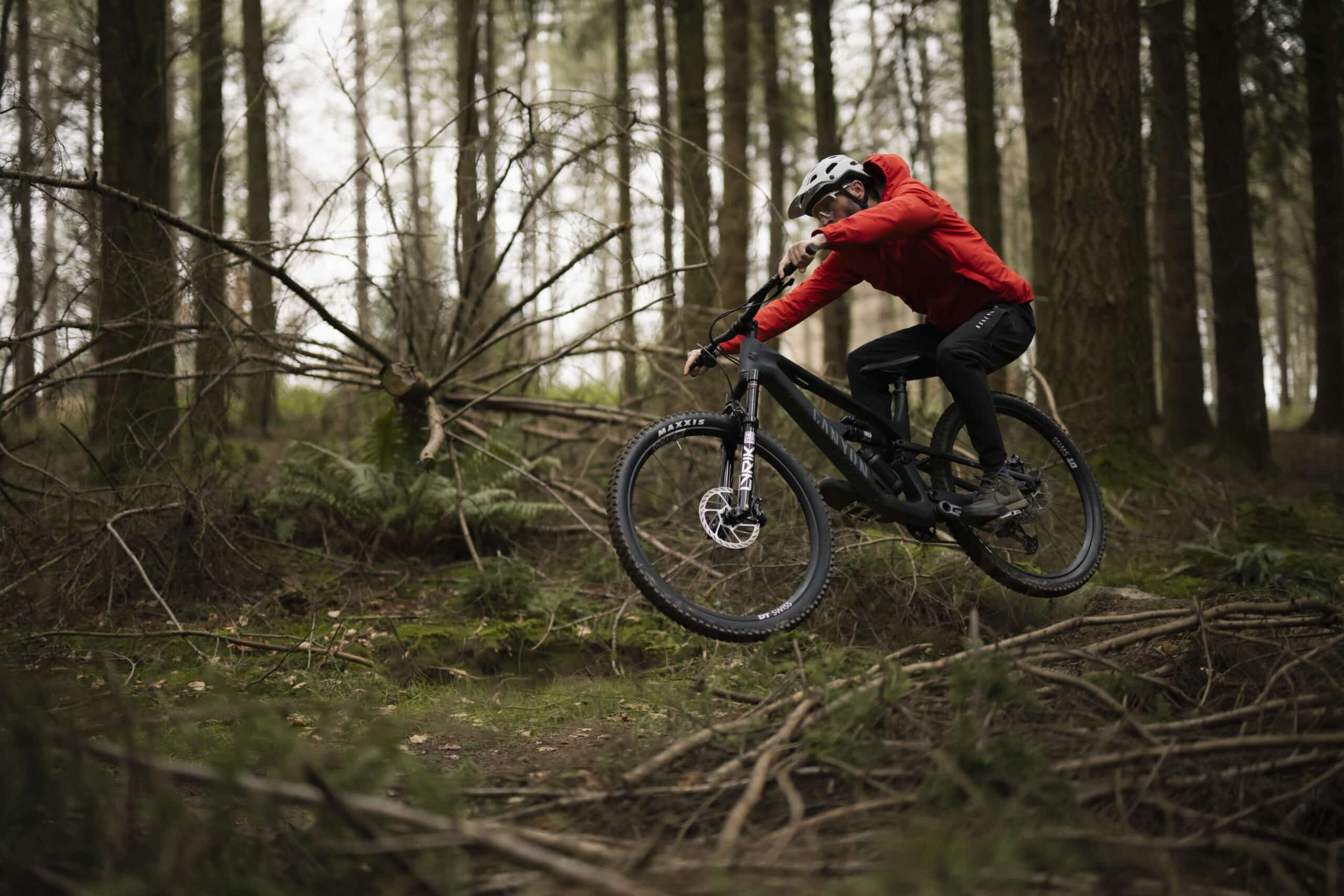
Initial thoughts
I’ll be honest with you, I think a lot of the issues I’ve had with the new Canyon Spectral probably won’t be experienced by most folks. Immediately before (and during) the brief test period I’ve had on the bike, I’d been test riding super planted e-bikes and sinuously supple coil-sprung metal-framed bikes. Getting back on an air sprung carbon fibre bike felt… sketchy. Having said that, I still have my concerns about the shock tune on the rear.
The new Spectral is not a bad bike. Far from it. It totally flies around fun, fast forestland. I’ve loaned the bike to fellow riders and they’ve just got on it, ridden it and loved it. So a lot of my waffle is no doubt just so much bike journo bleating. But that’s my job.
It’s also one of the undesirable aspects of these ‘first ride review’ type things where you’ve ridden the bike for a day at a press camp and had loads of fun becuase the trails were rad (Forest Of Dean) and then you only get a week or so to ride the ride the bike on home trails. I don’t want to go down the easier route of ‘woo! yeah! this bike is rad!’ but I also don’t want this first write-up to swing the other way and just be concentrating on the niggles. At the end of the day, whilst I haven’t totally gelled with the new Spectral, that is not unusual for a test bike. Sometimes things go swimmingly from the get-go. Sometimes bikes need a bit of coaxing into my preferred shape, as it were.
I just think one of the frustrations I’m having with the Spectral so far is that it feels like it could be even better. It has capable all-round geometry, a pleasant seating position to be in all-day, a decent fork, mostly good selection of parts. There is a shedload of potential here. It could be way up there with such modern classics as the Scott Genius ST or the Atherton AM.130. It may only be a knob twiddle and/or a volume spacer away from being amazing. Or it may require more drastic surgery. But I think there’s something to unearth here.
I’ll let you know.
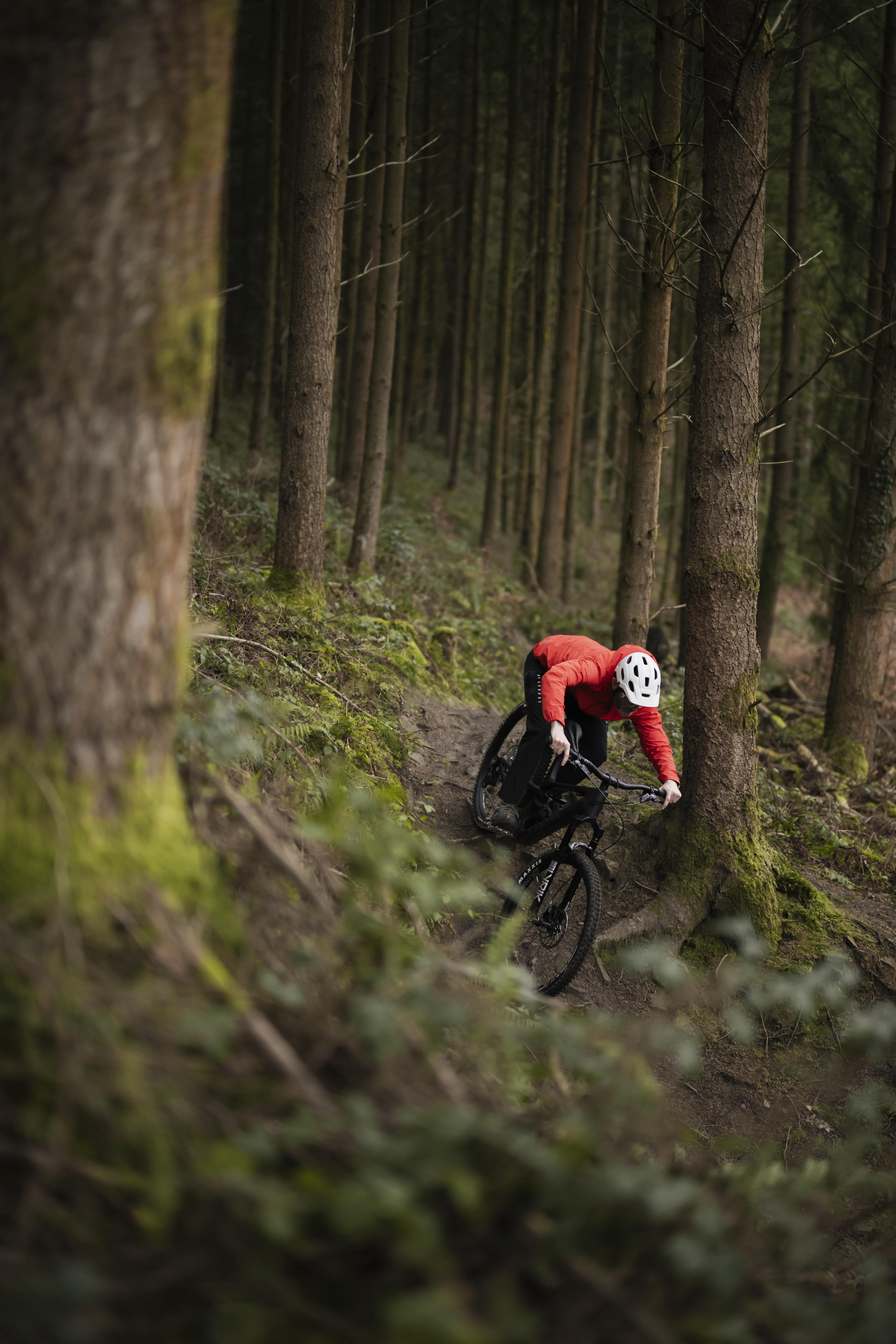
The Canyon Spectral range
- Spectral CF 7, £3,299
- Spectral CF 8 CLLCTV, £3,849
- Spectral CF 9, £ 4,799
- Spectral CF LTD, £6,699

Canyon Spectral CF 9 specification
- Frame // Canyon Spectral CF, 140 mm
- Shock // RockShox Super Deluxe Ultimate
- Fork // RockShox Lyrik Ultimate, 150 mm
- Wheels // DT Swiss XM1700
- Front Tyre // Maxxis Minion DHR II 2.4 Maxxterra, EXO
- Rear Tyre // Maxxis Minion DHR II 2.4 Maxxterra, EXO+
- Chainset // SRAM GX, 170mm, 32t
- Brakes // SRAM Code RSC, 200/180 mm
- Drivetrain // SRAM GX Eagle Transmission, 10–52t
- Stem // Canyon G5, 31.8mm, 40 mm
- Handlebars // Canyon G5 AL, 31.8mm, 780mm
- Grips // Canyon G5 Lock-on
- Seat Post // Canyon G5 Dropper, 34.9mm, 200mm
- Saddle // Ergon Enduro Comp
- Weight // 15.1kg
Geometry of our size Large
- Head angle // 64°
- Effective seat angle // 76.1°
- Seat tube length // 445mm
- Head tube length // 130mm
- Chainstay // 437mm
- Wheelbase // 1,280mm
- Effective top tube // 653mm
- BB height // 36mm BB drop
- Reach // 500mm







